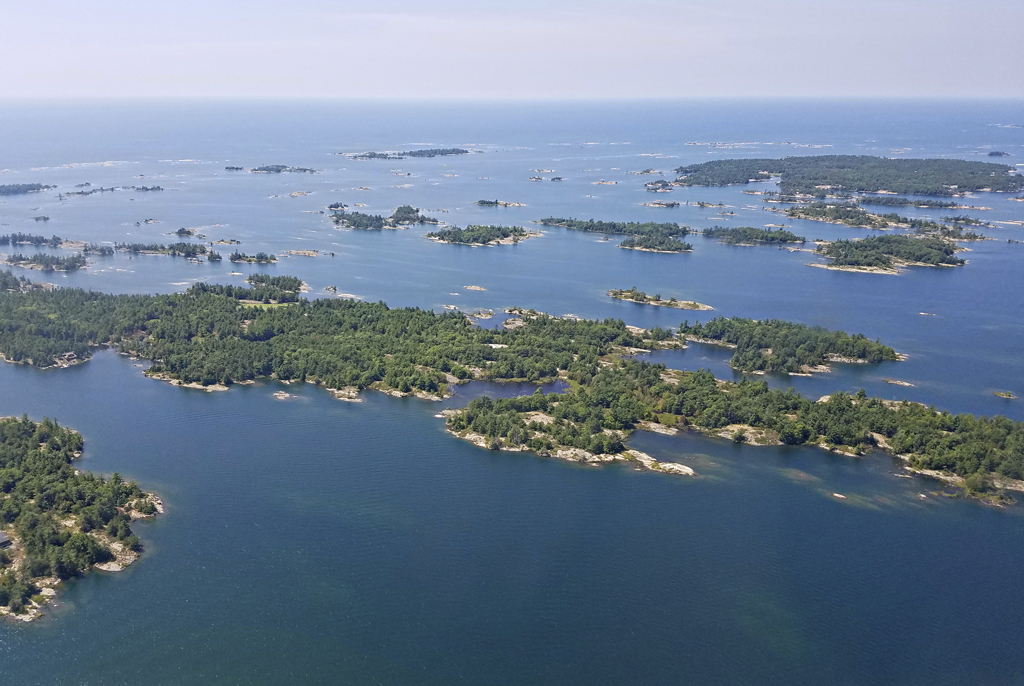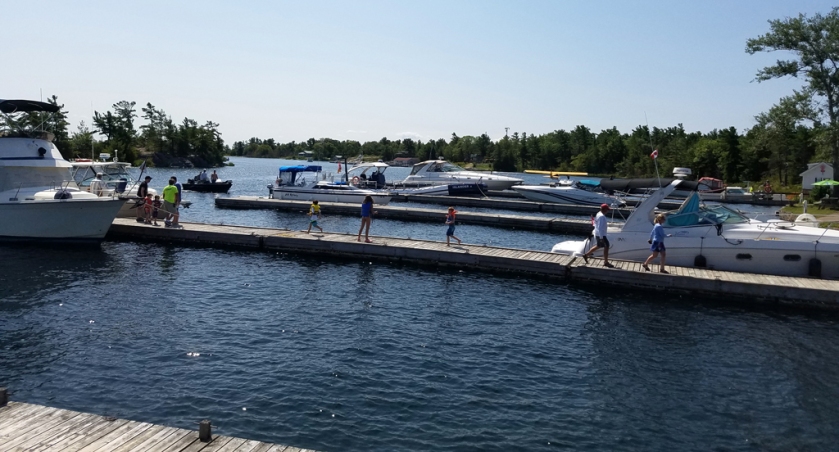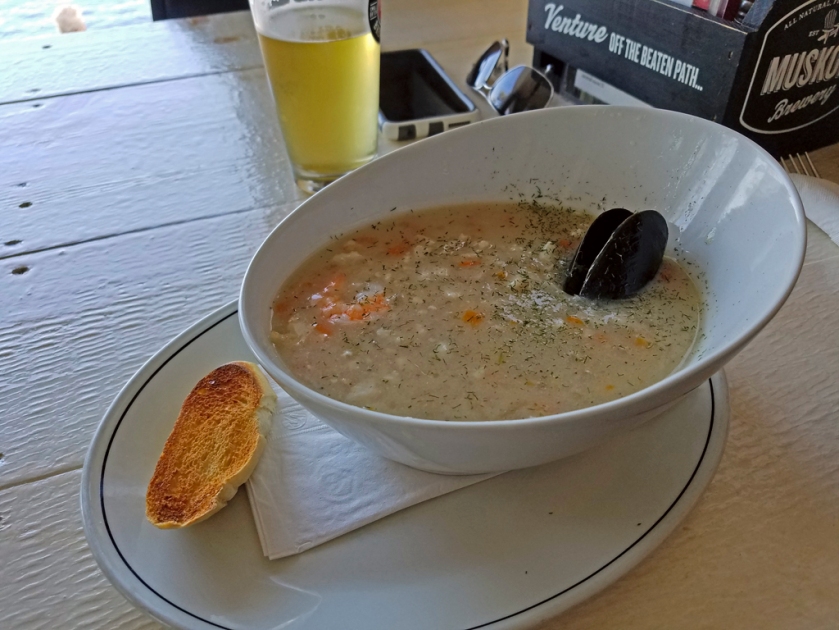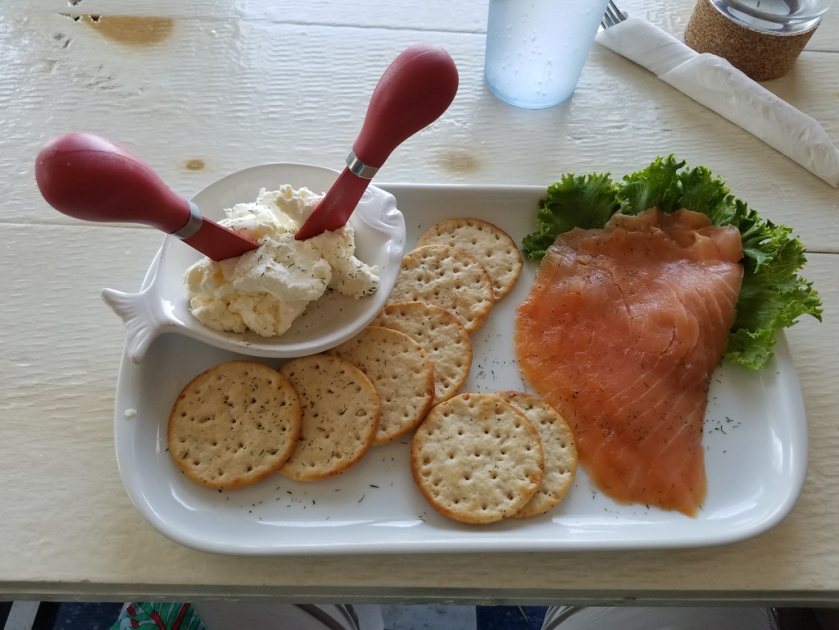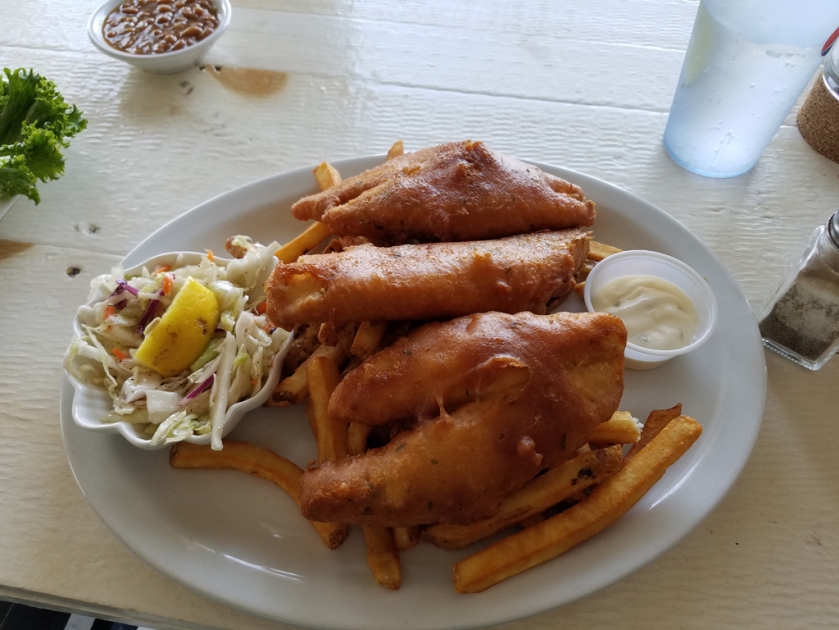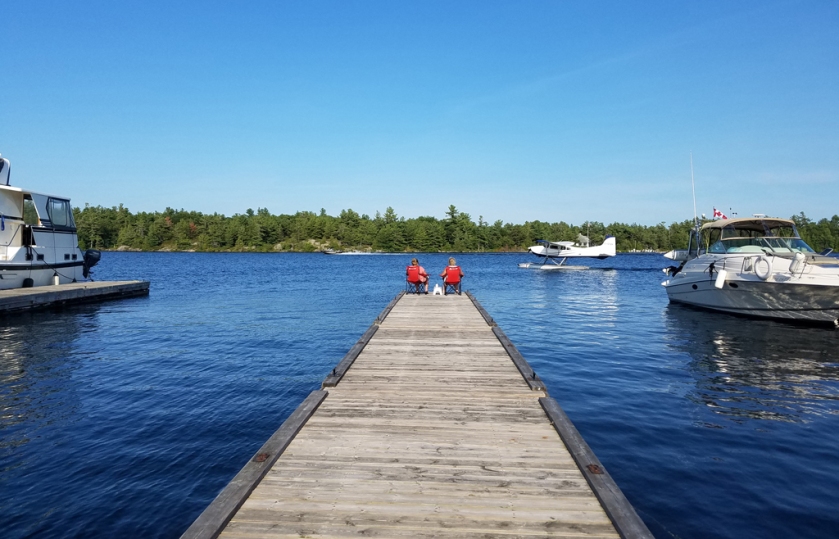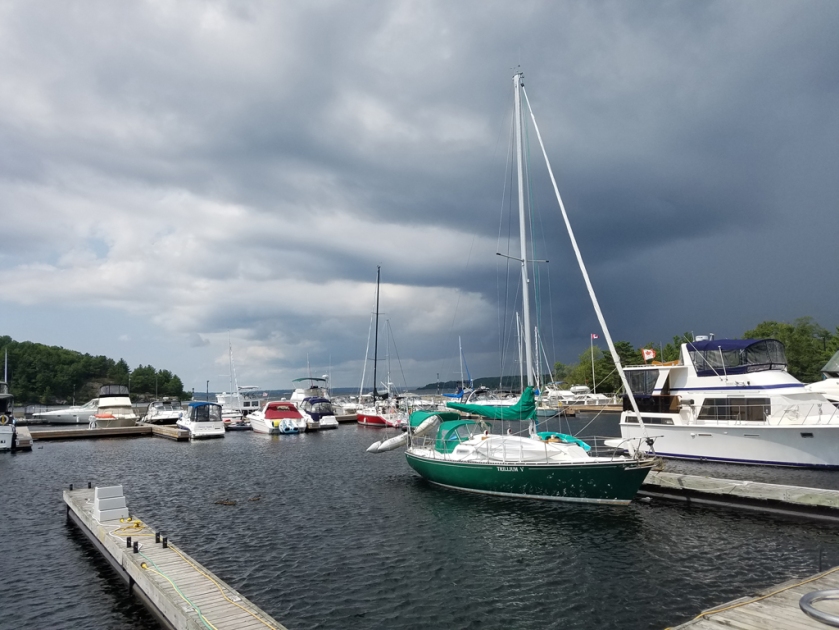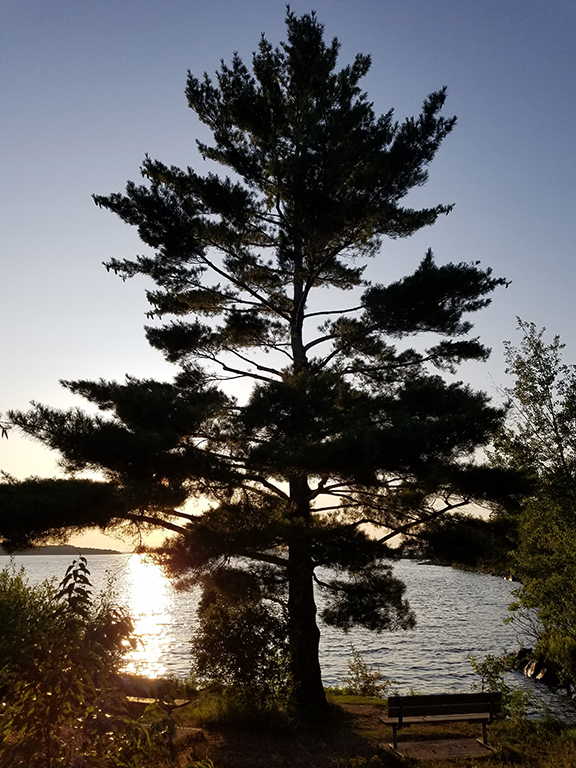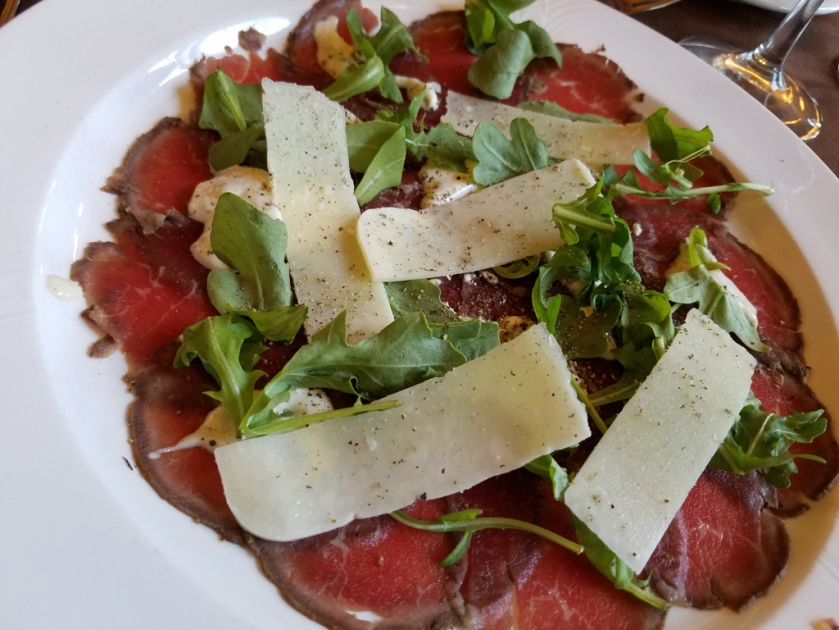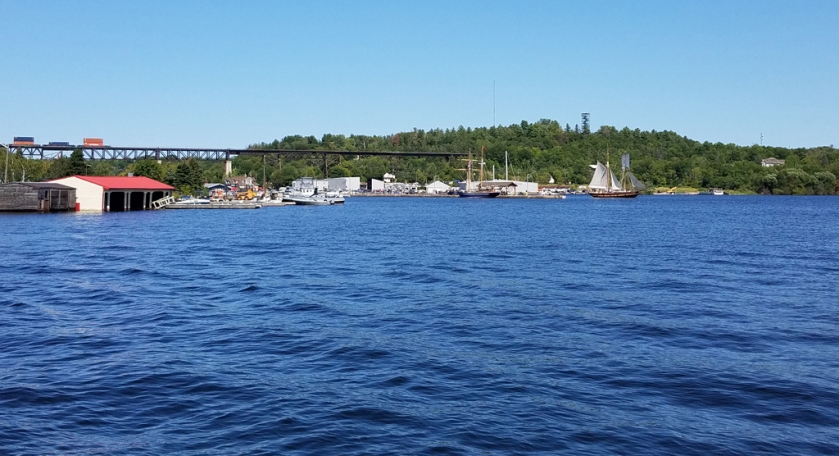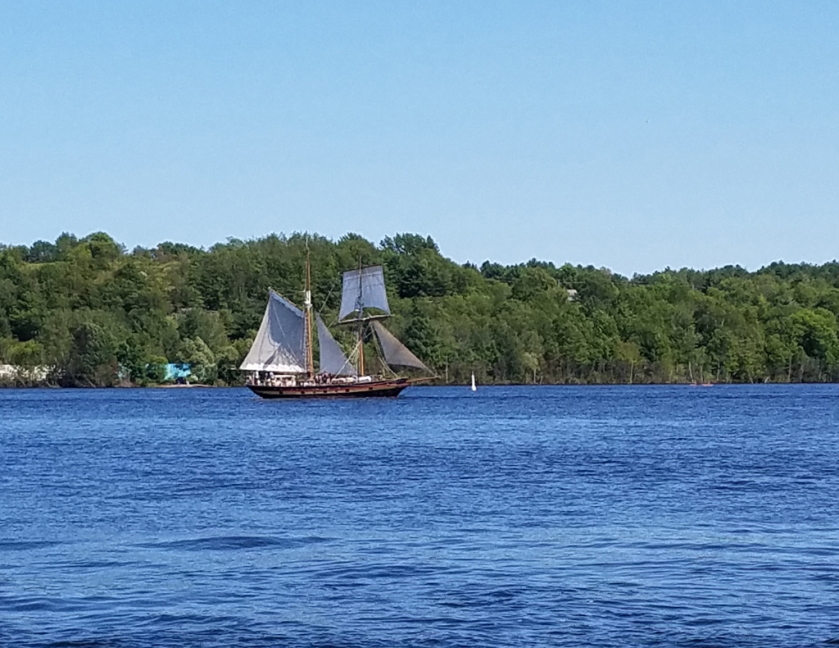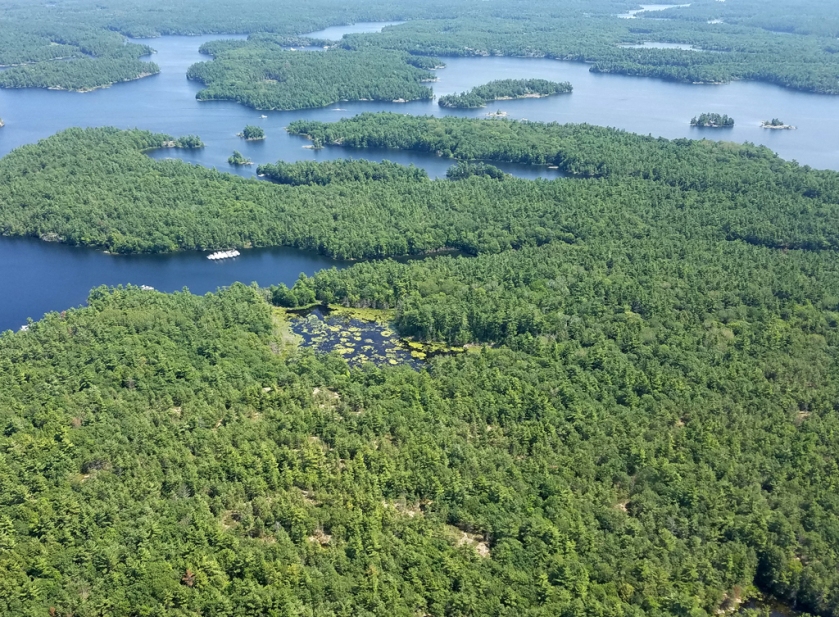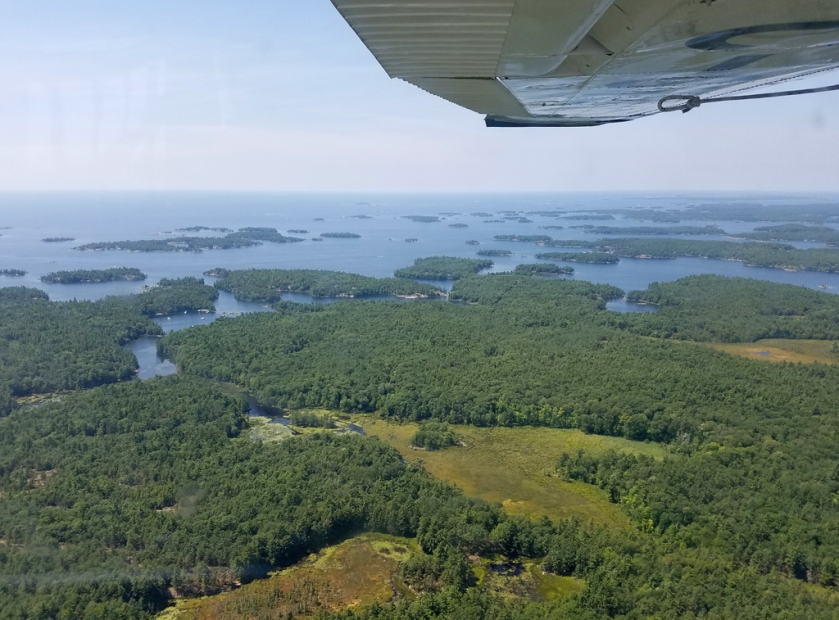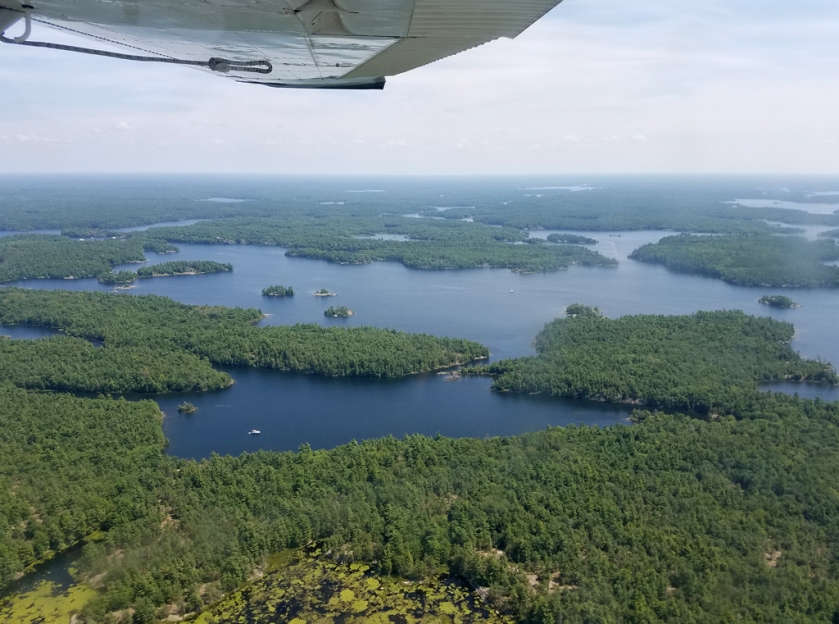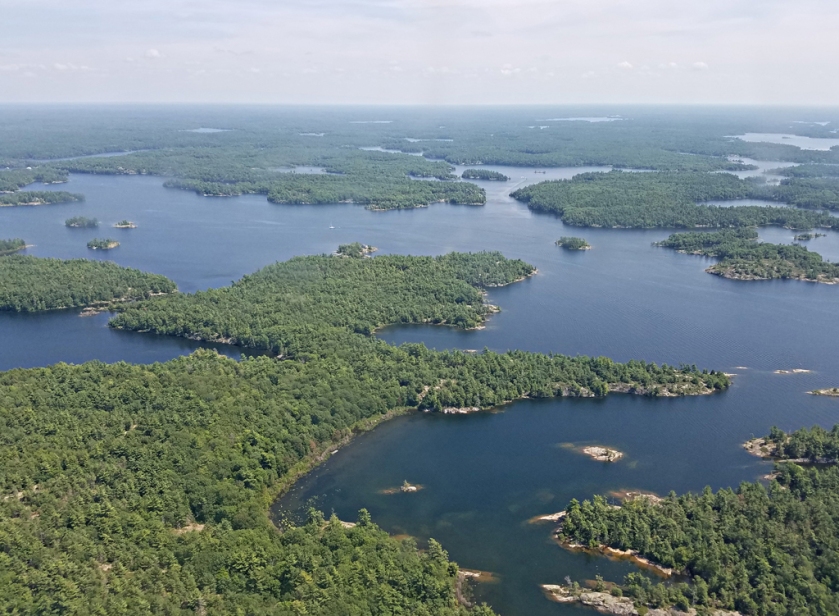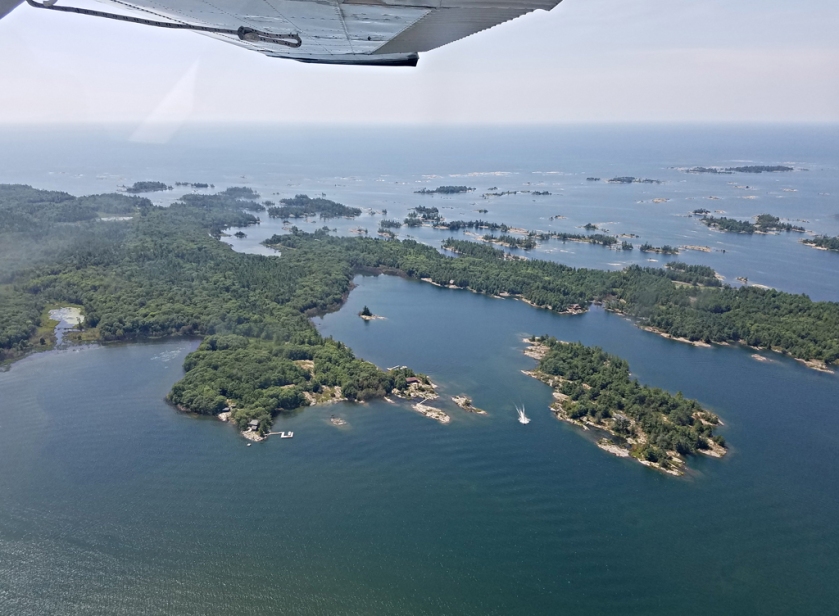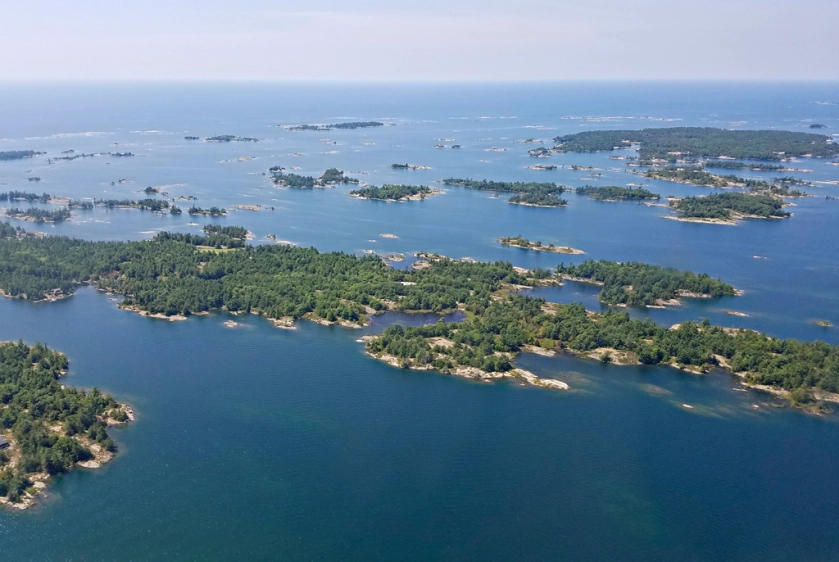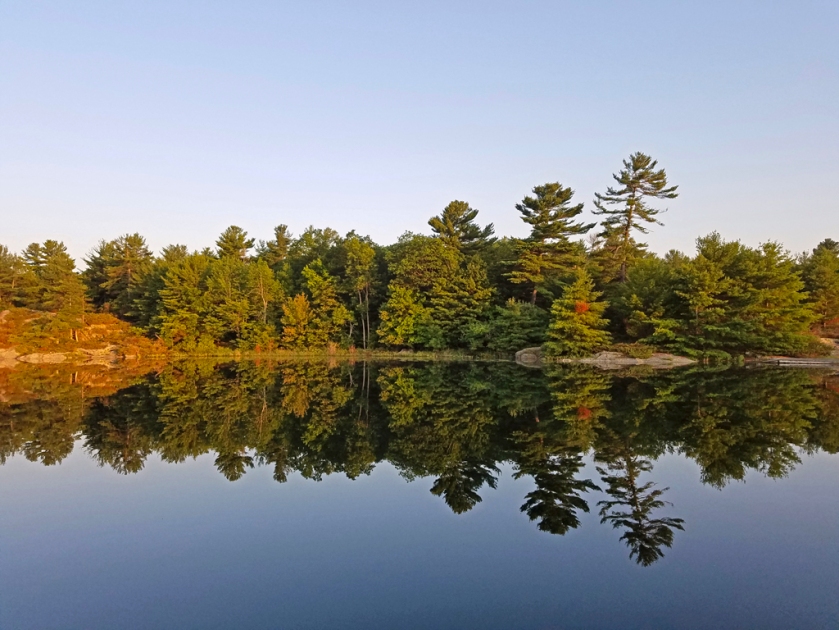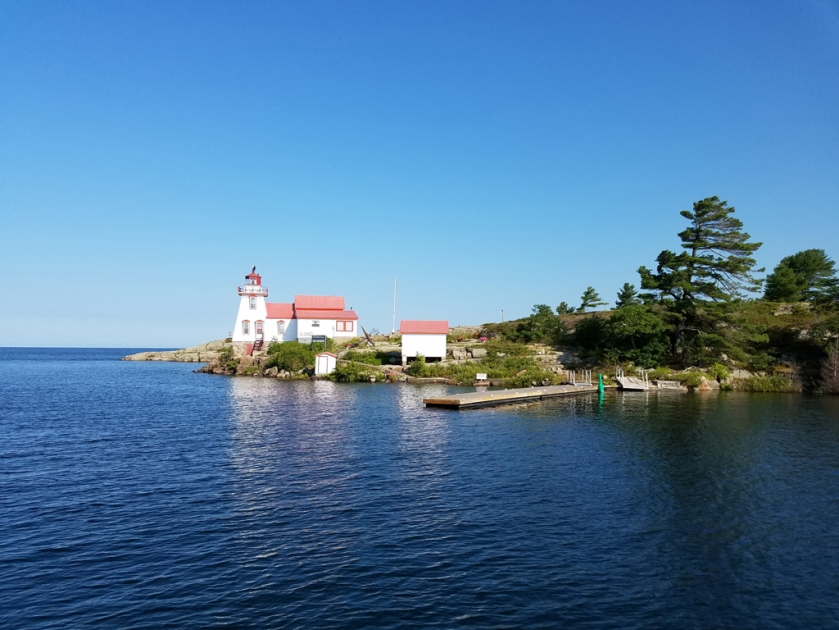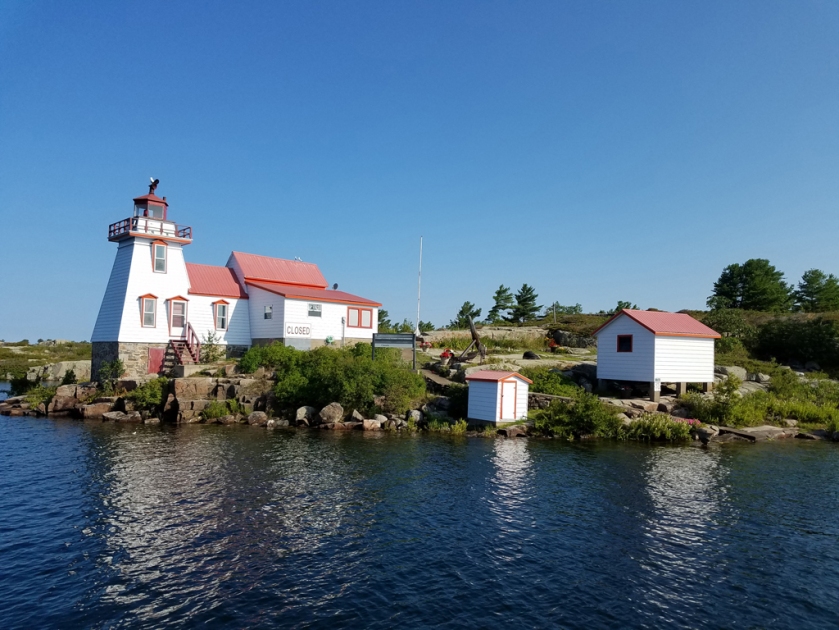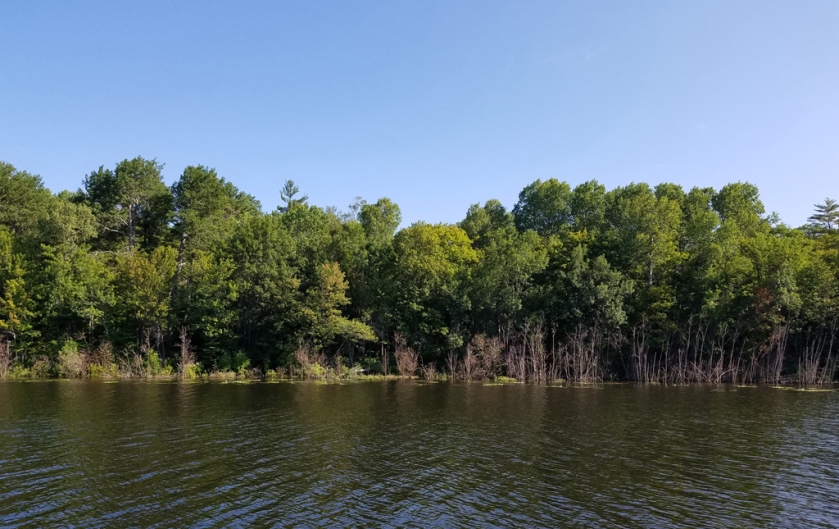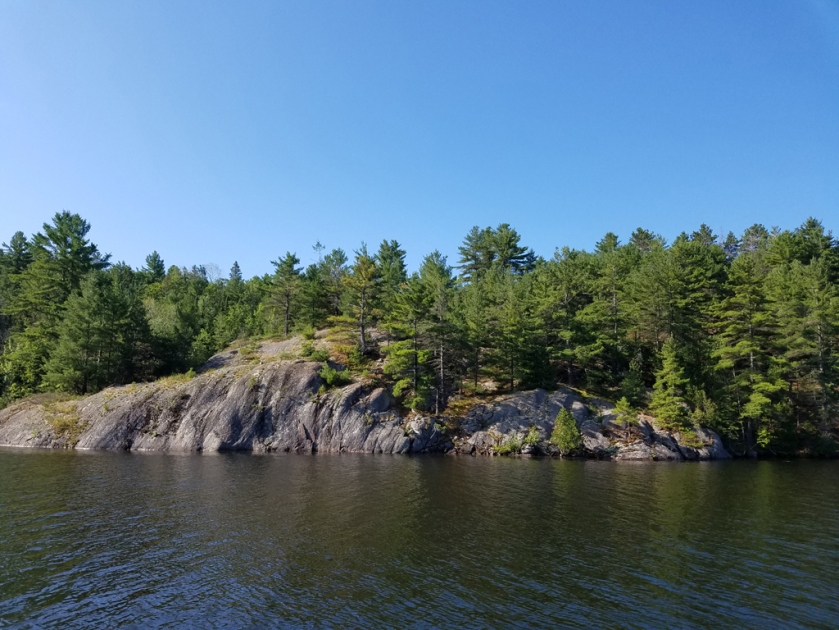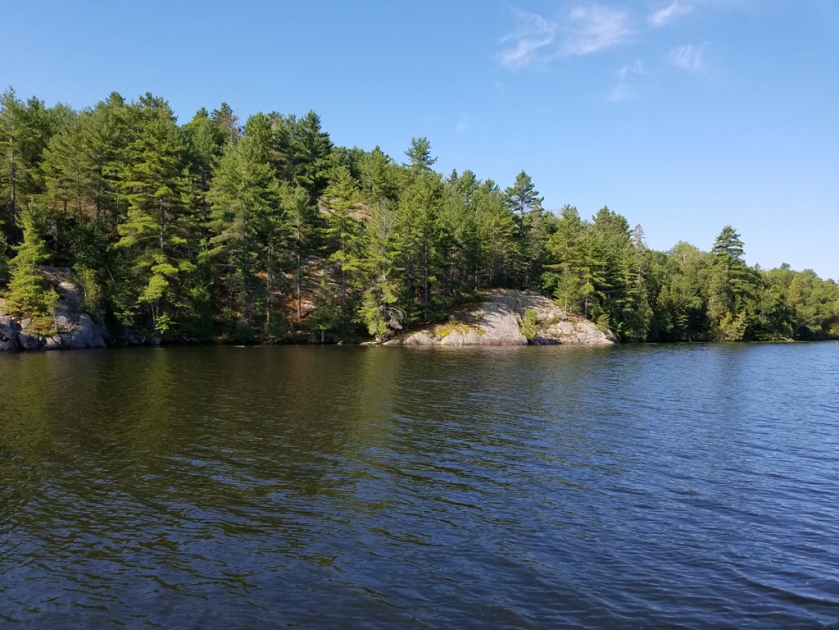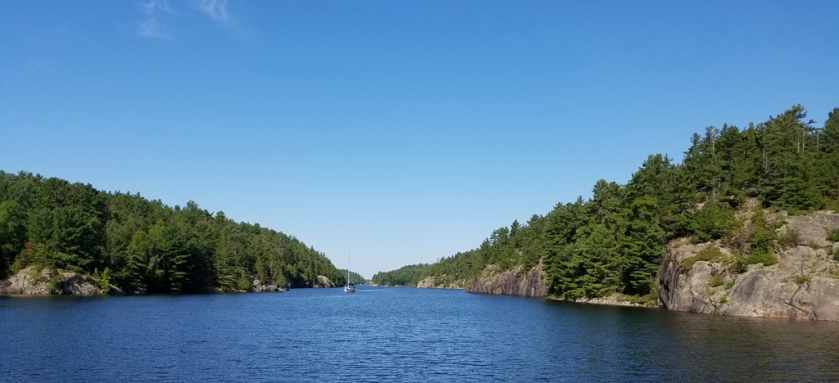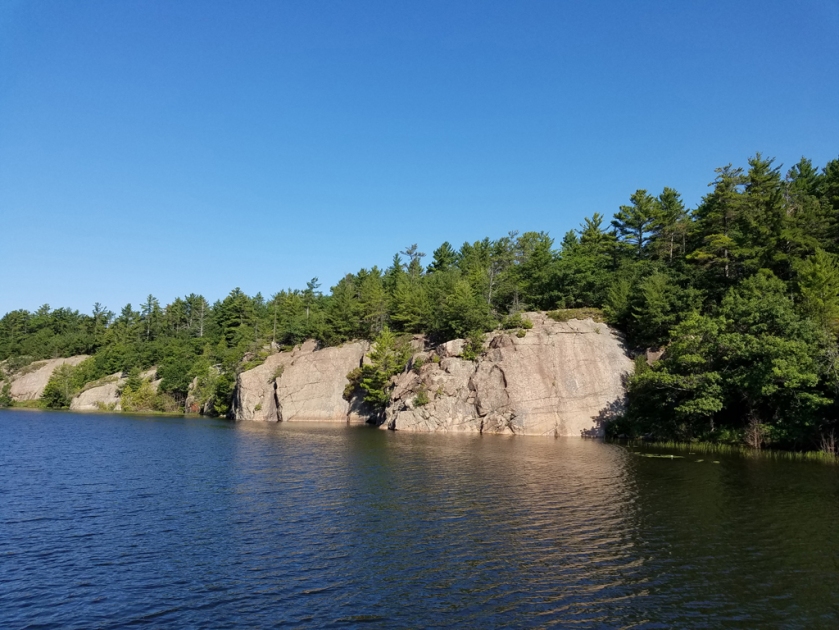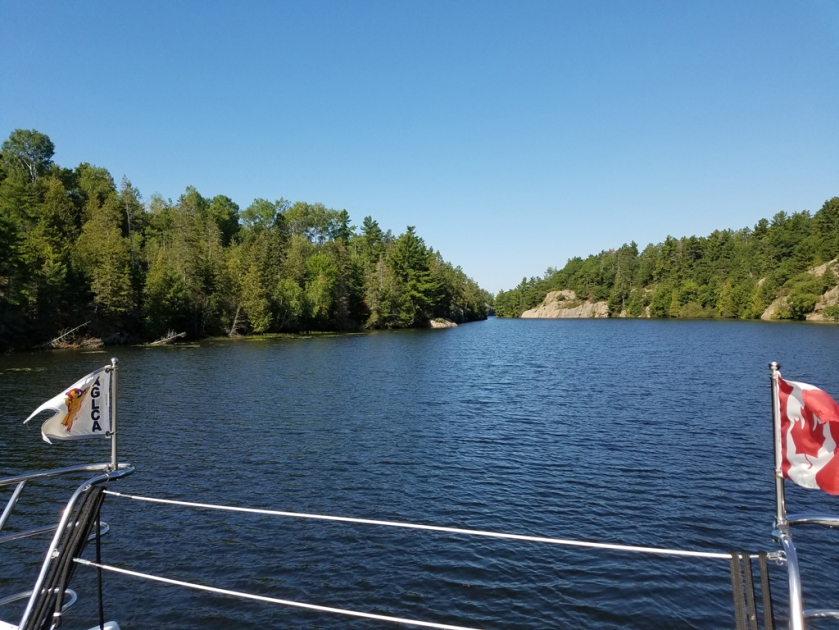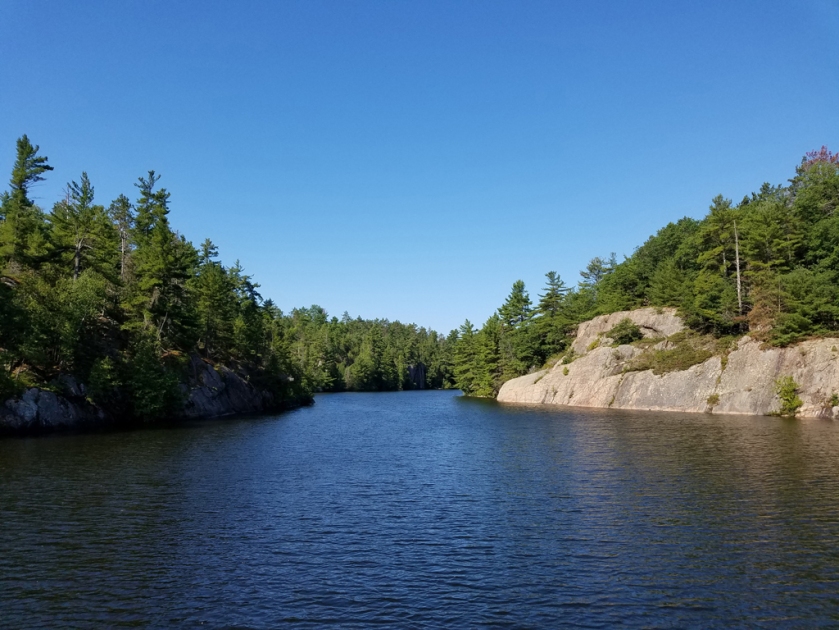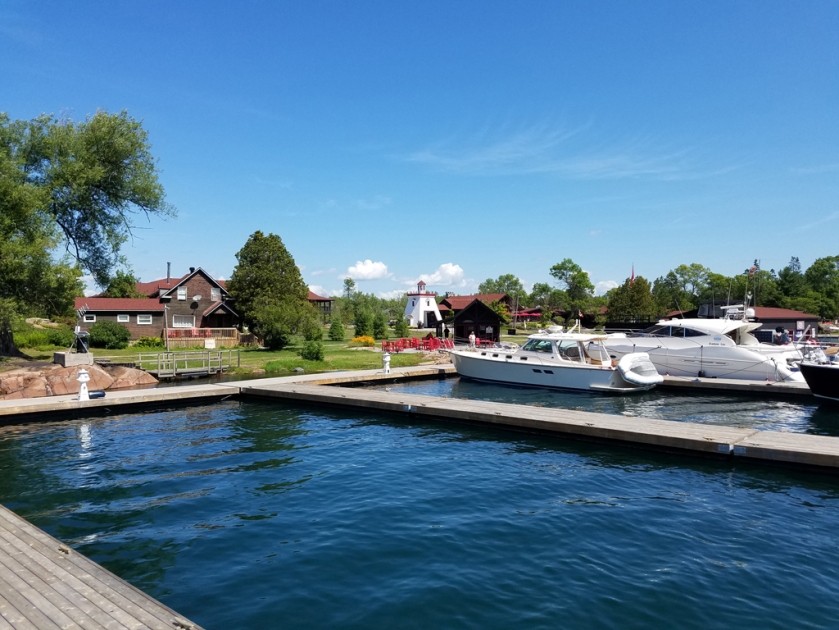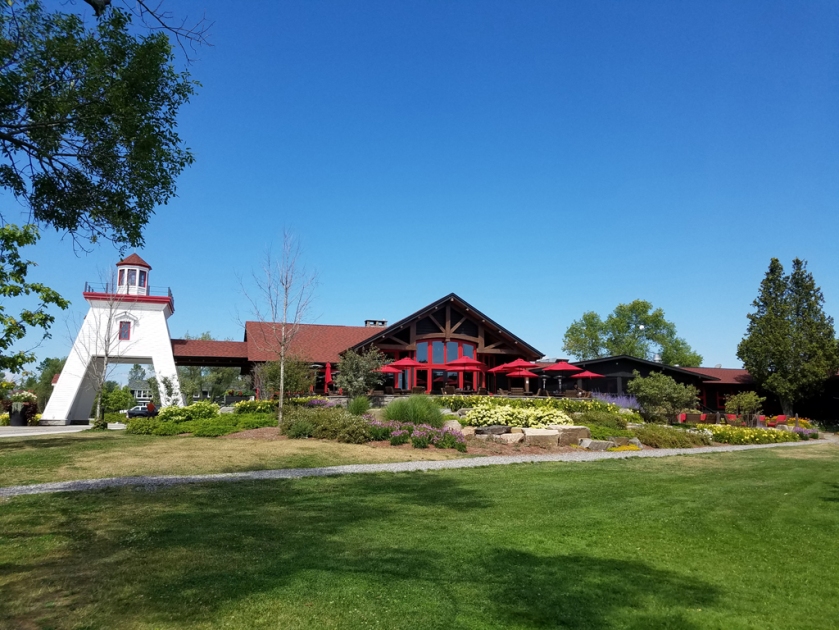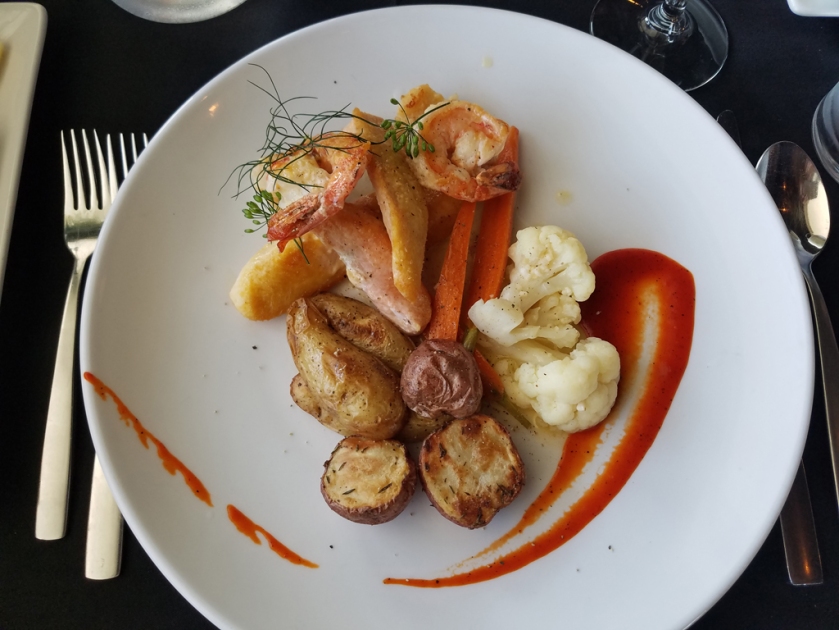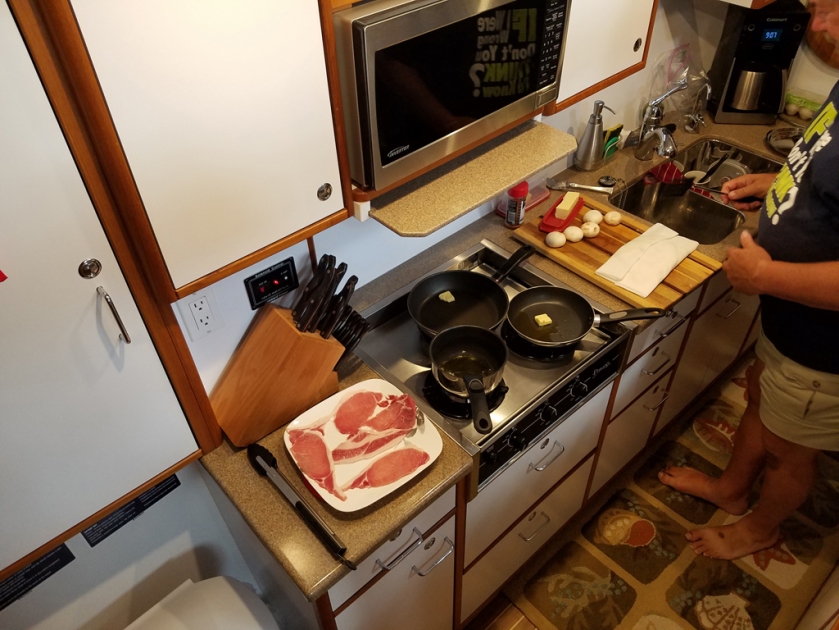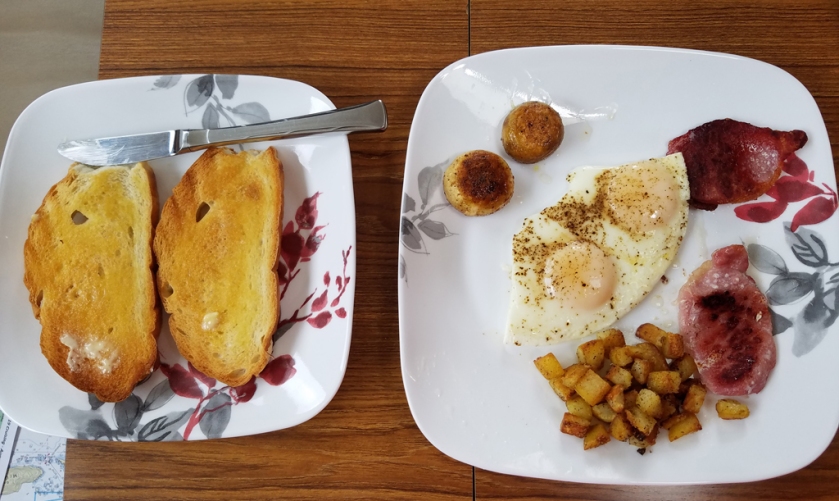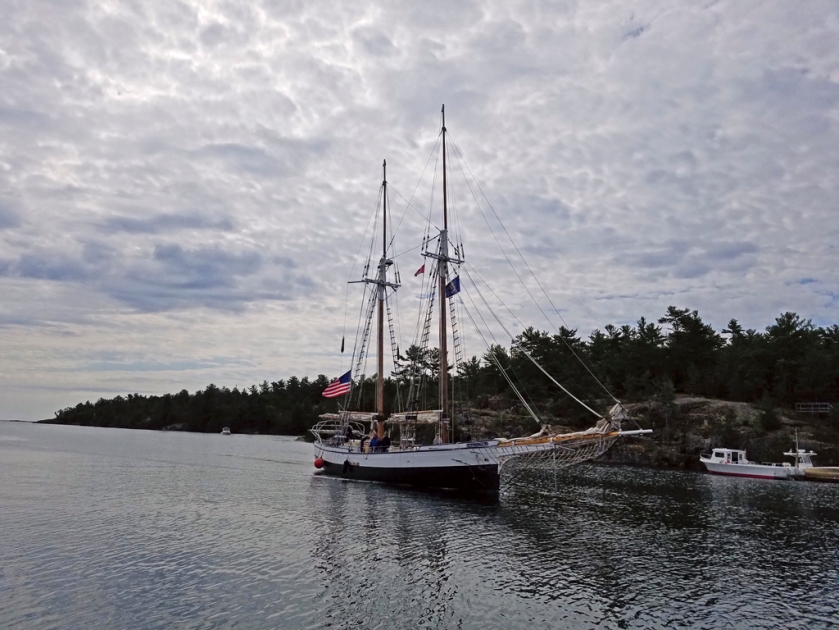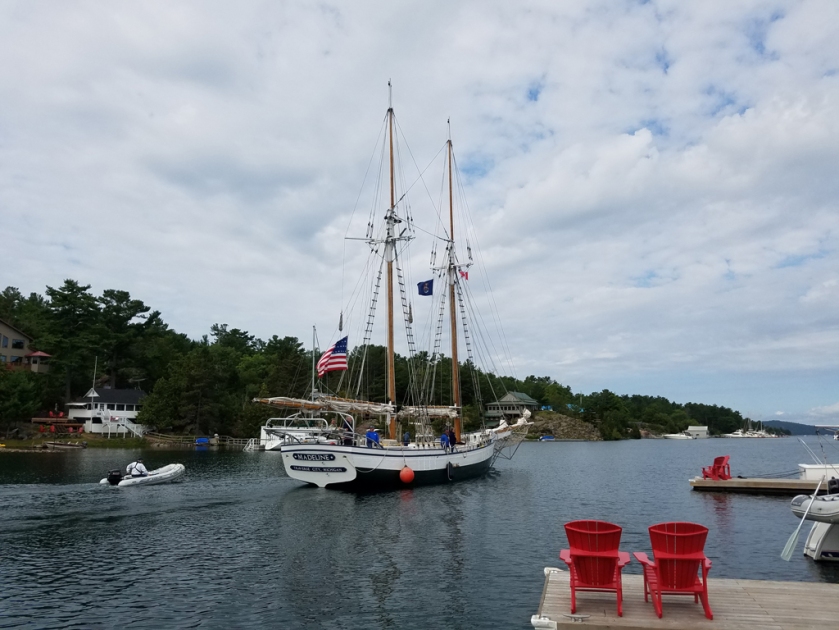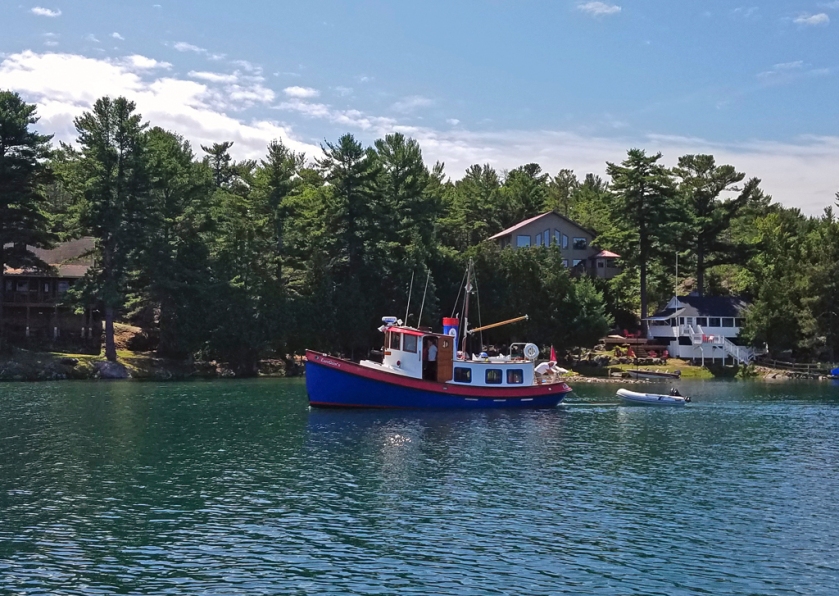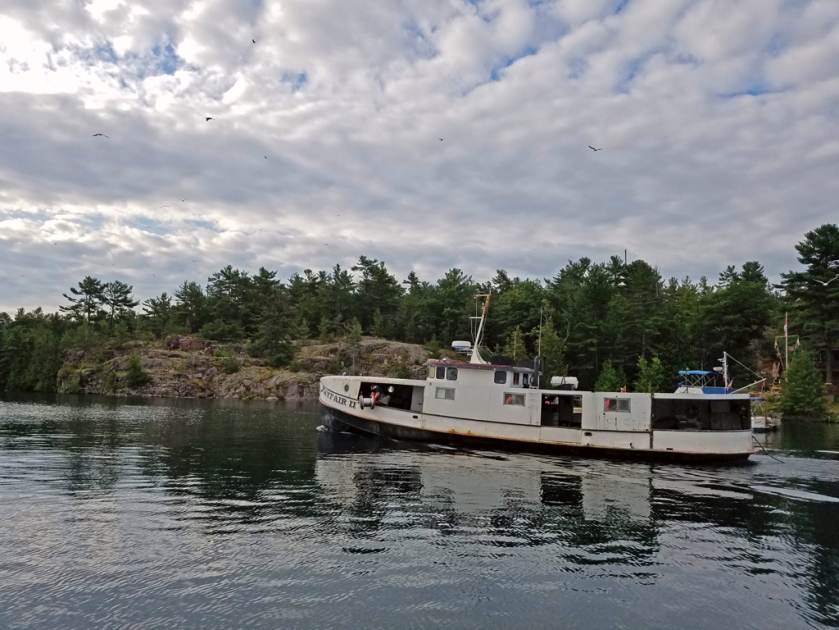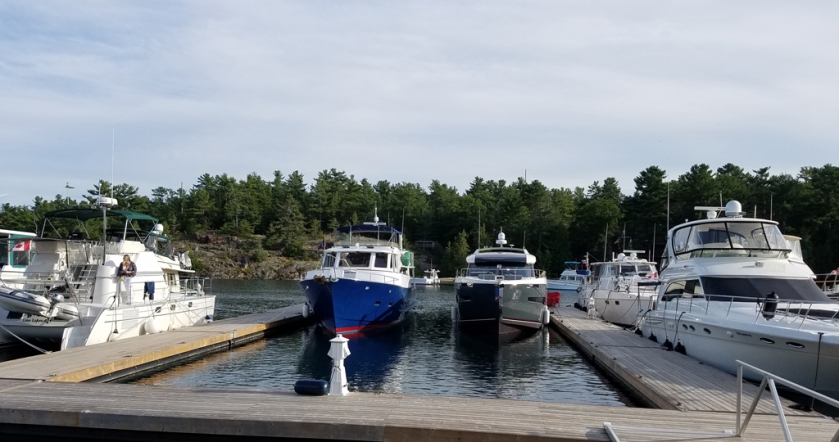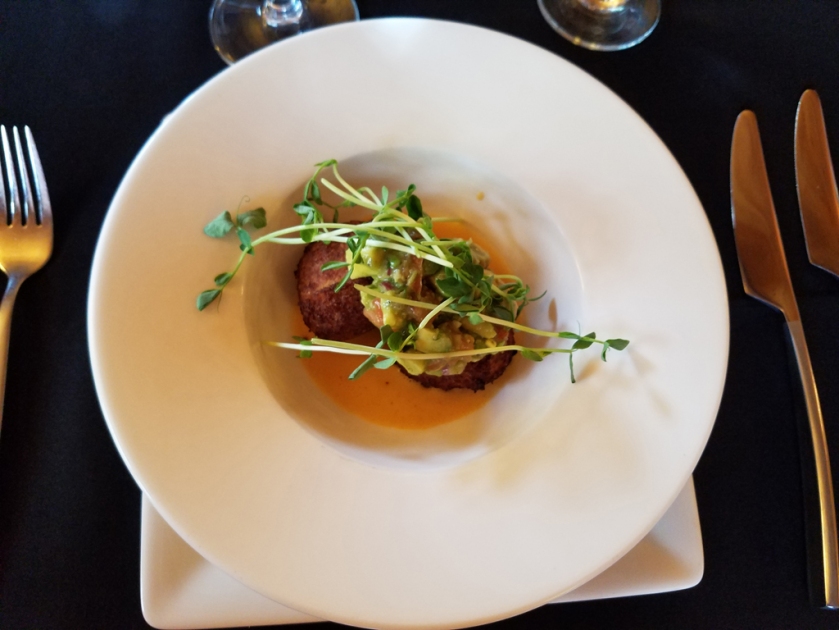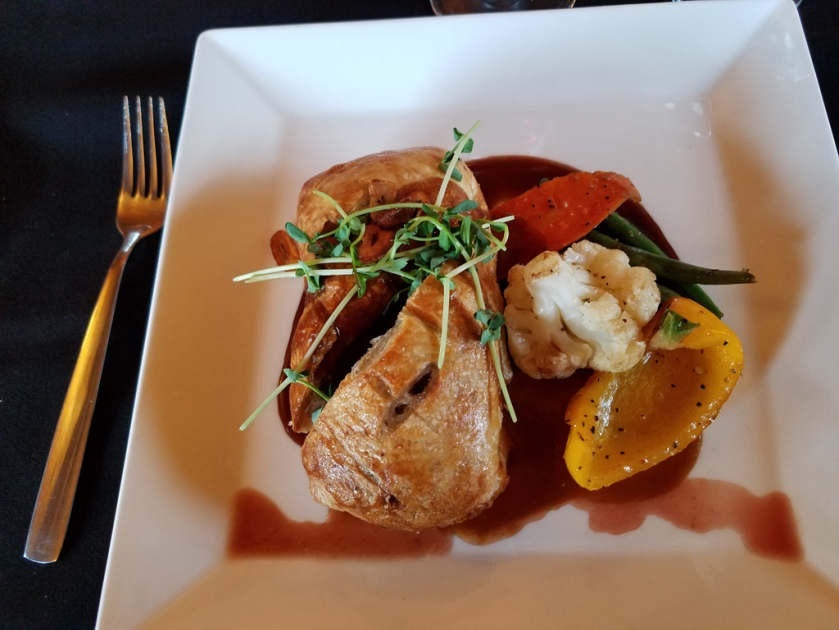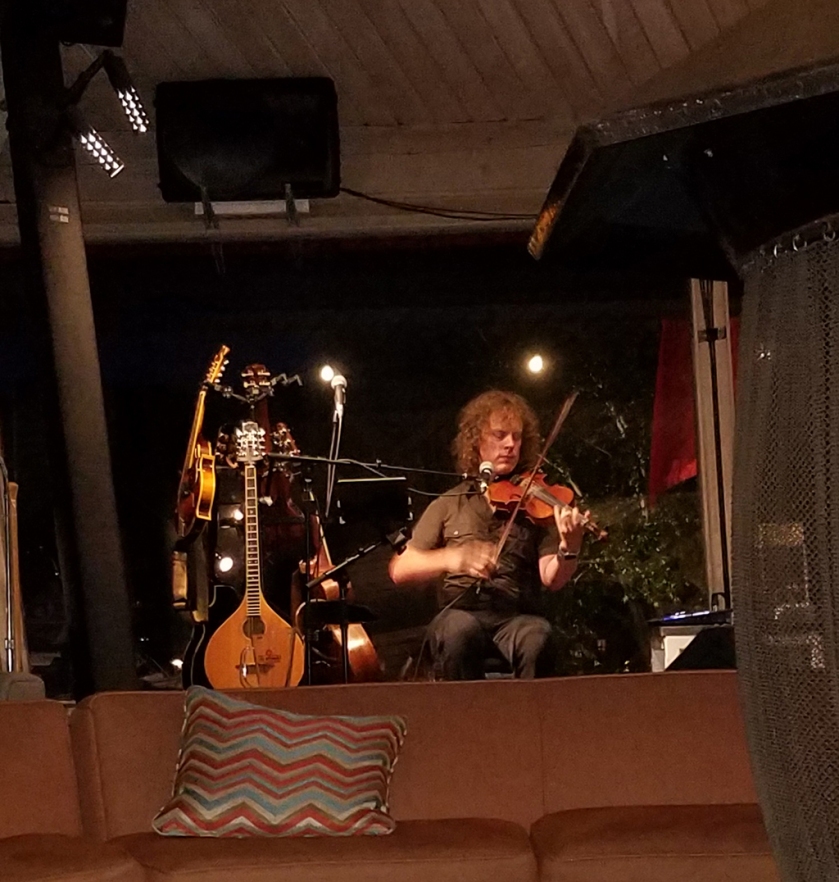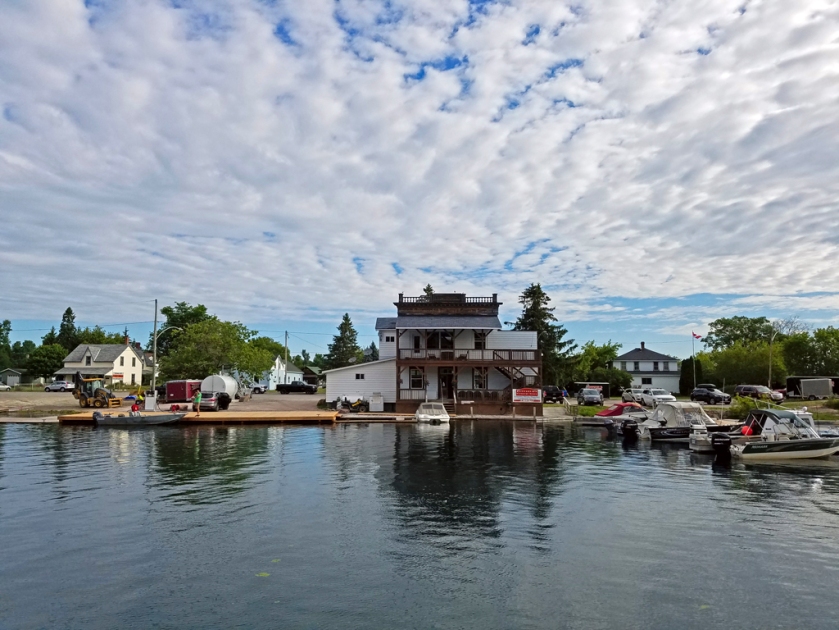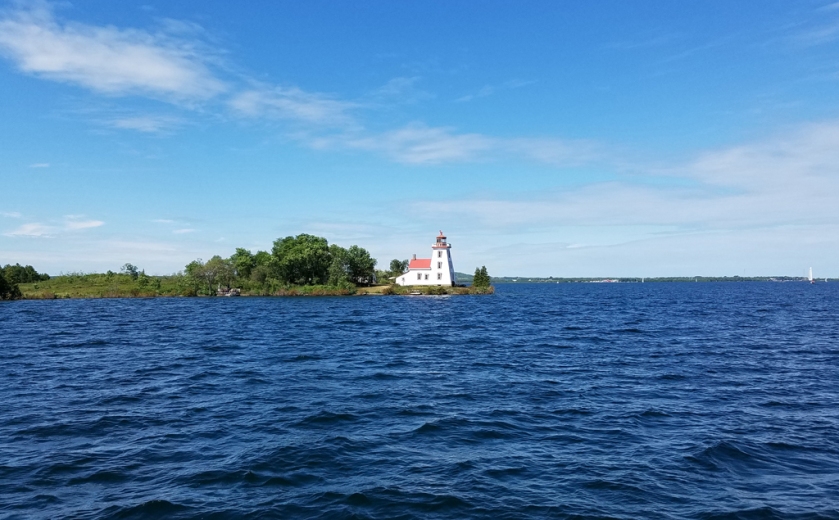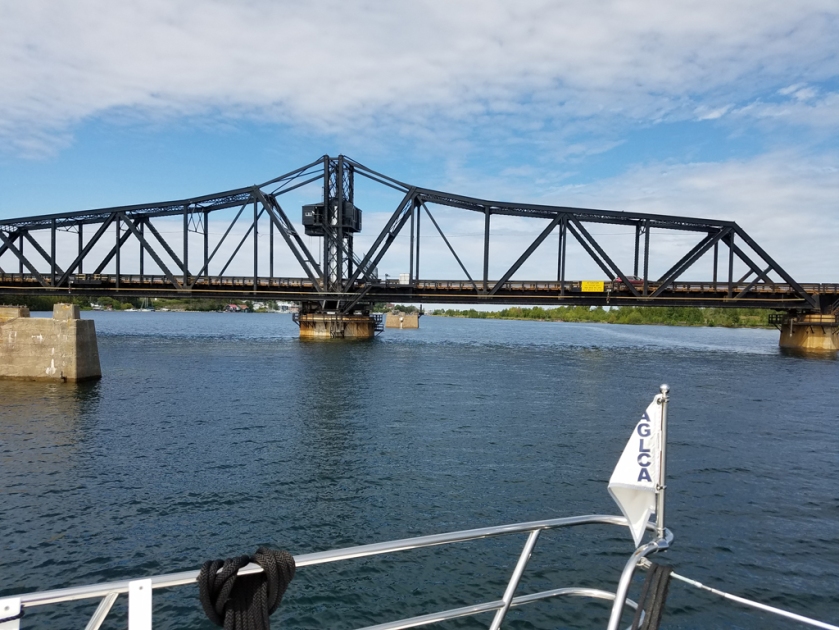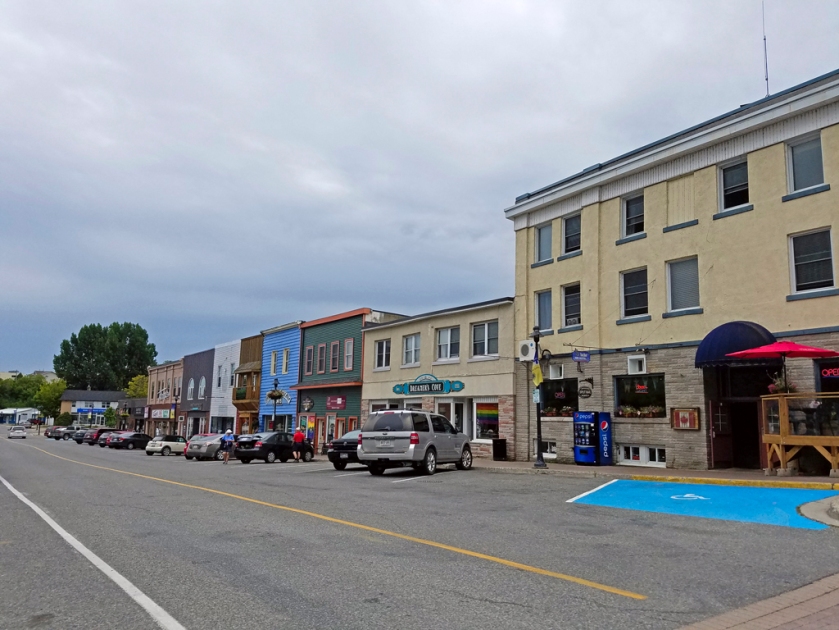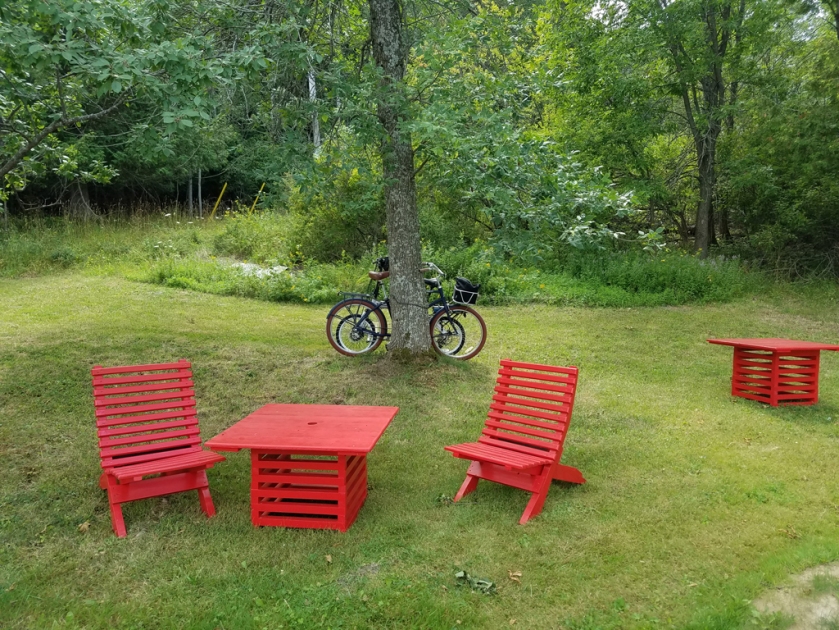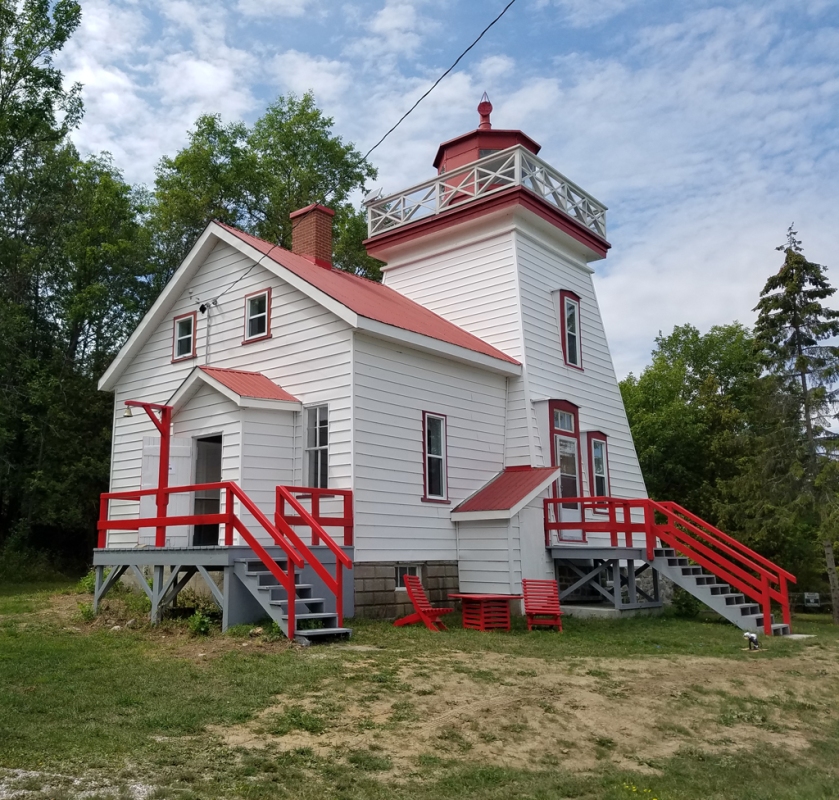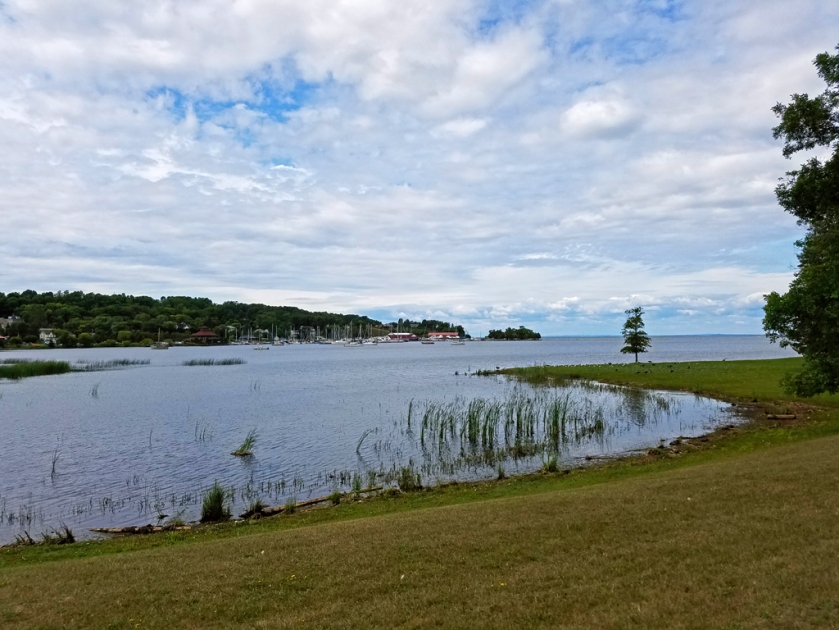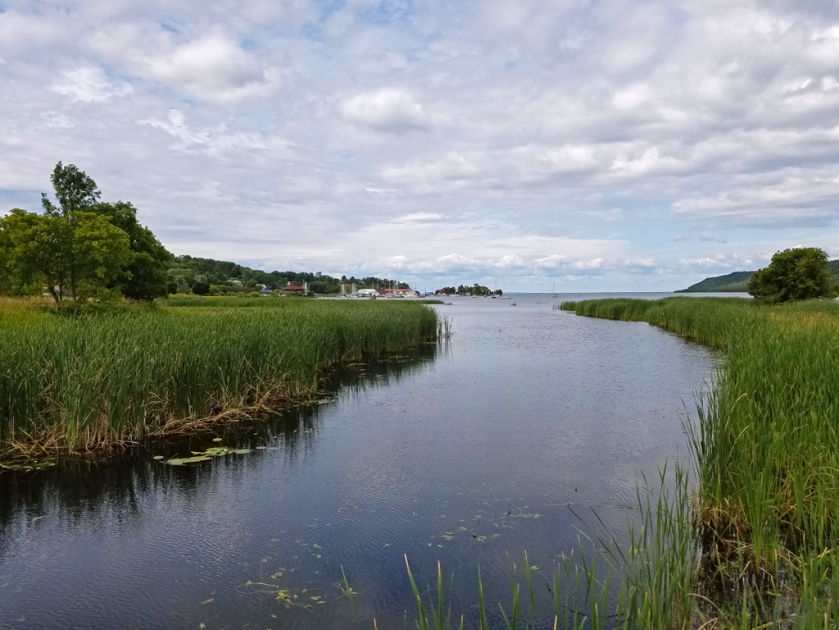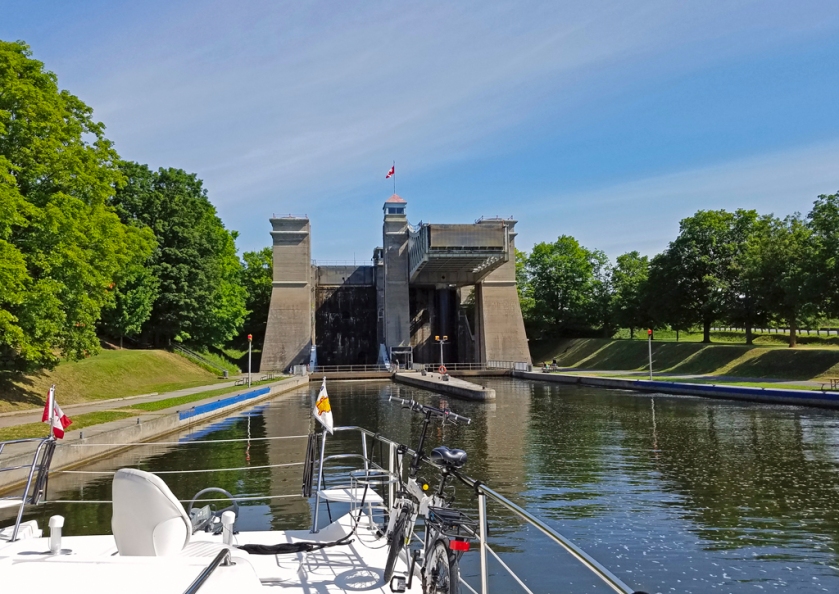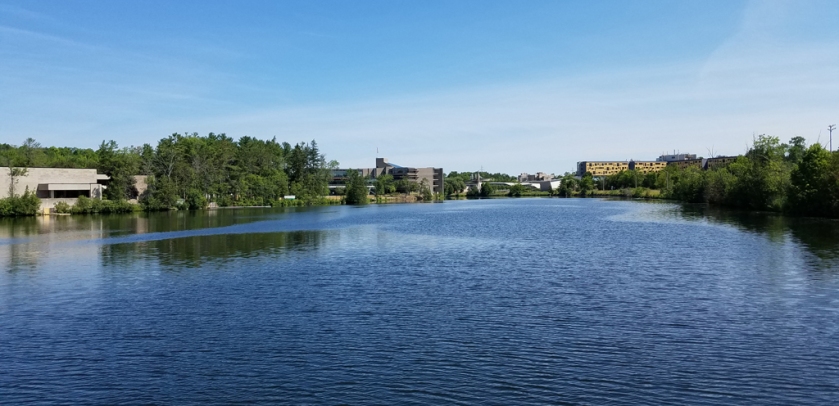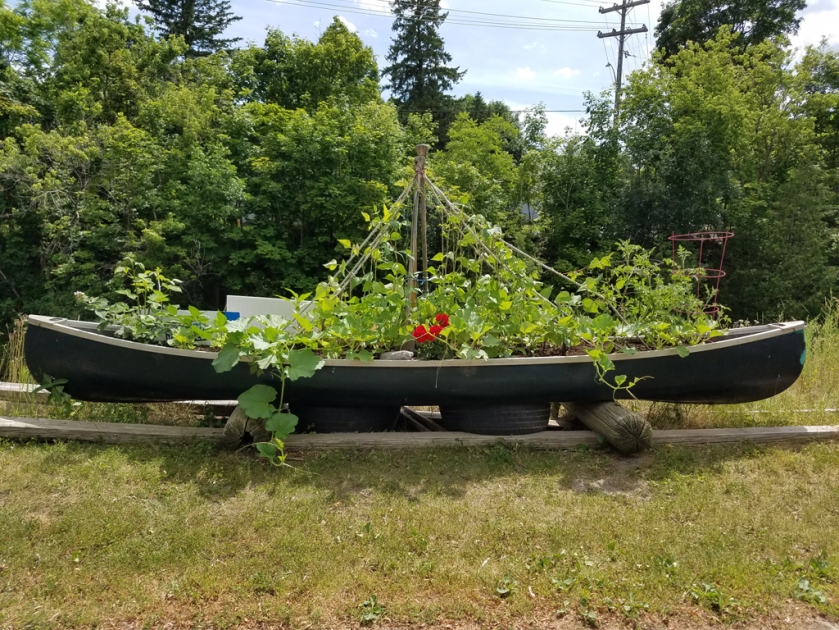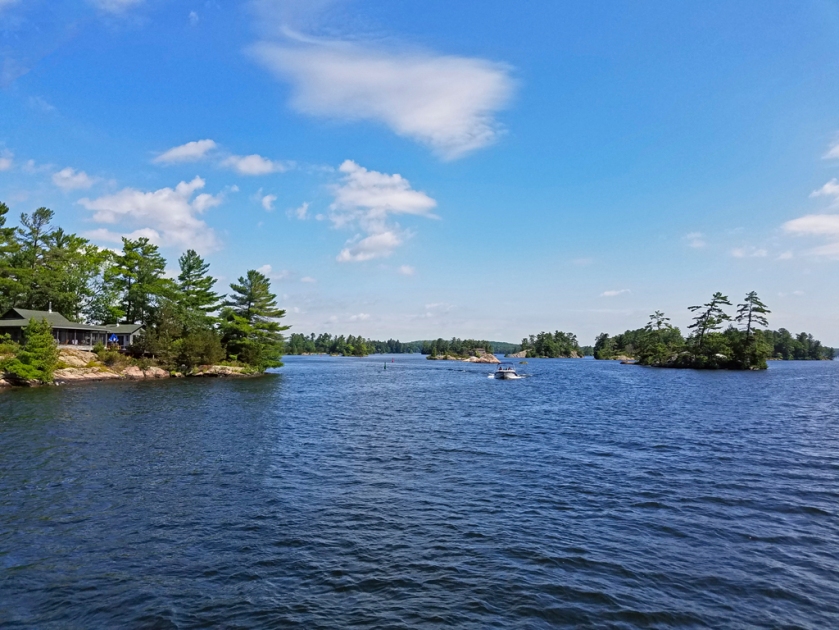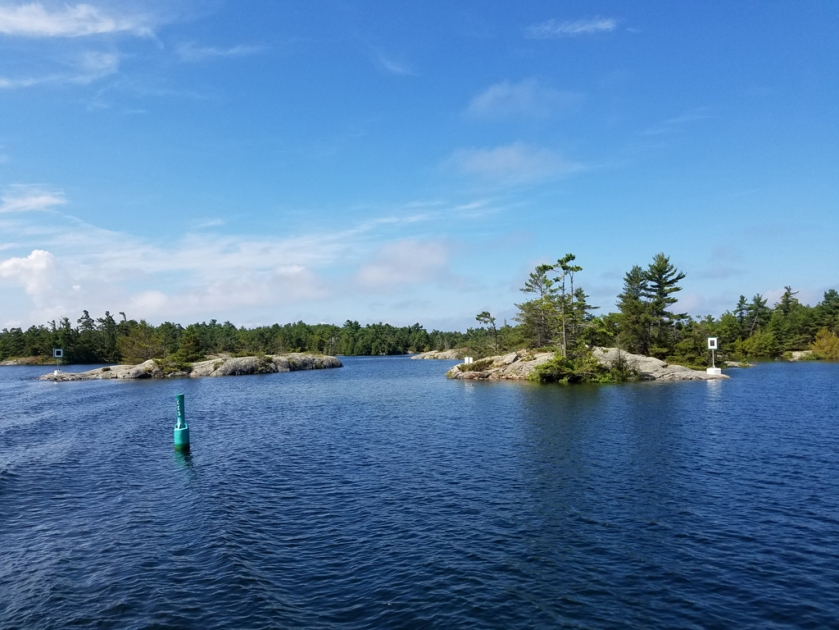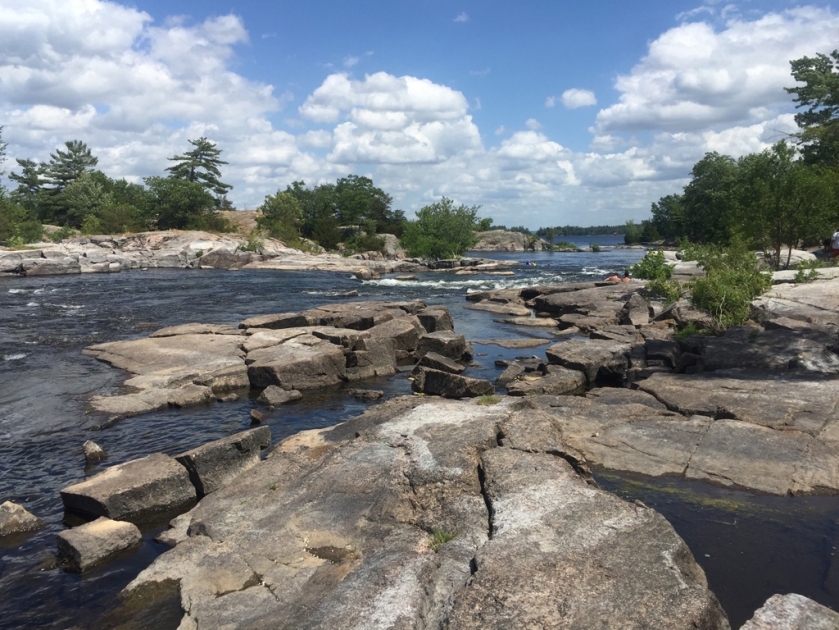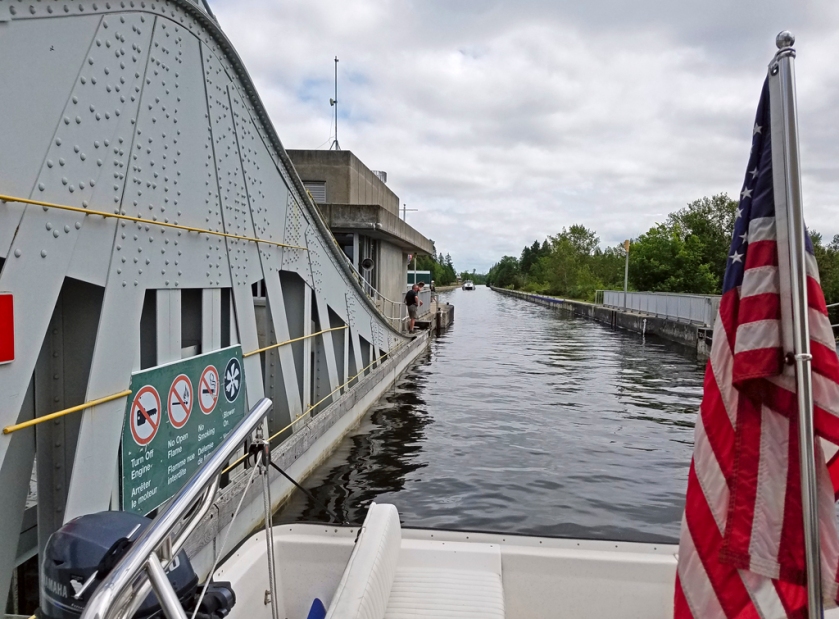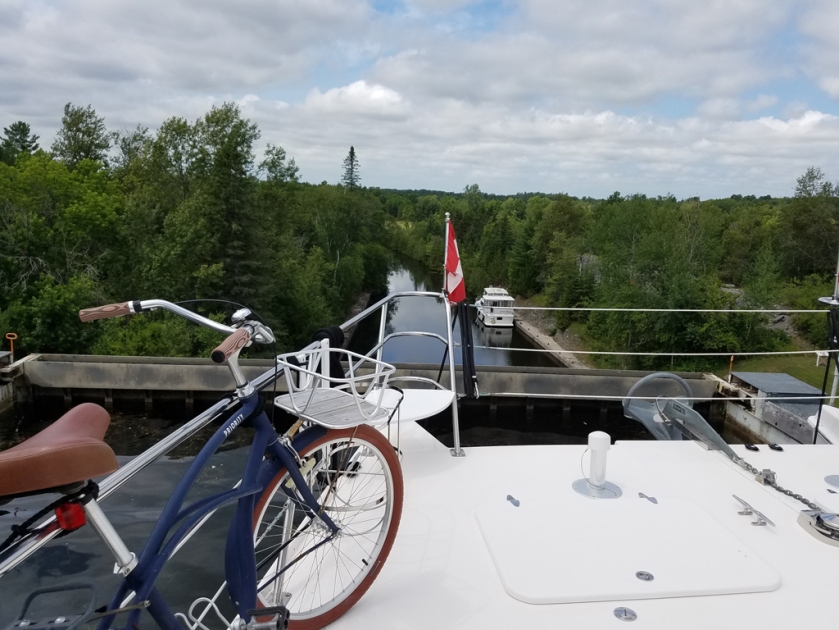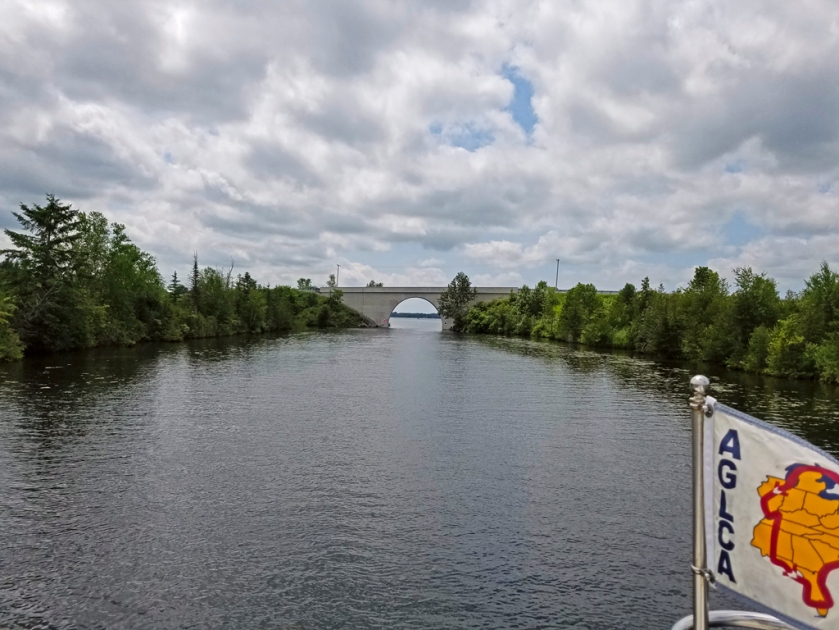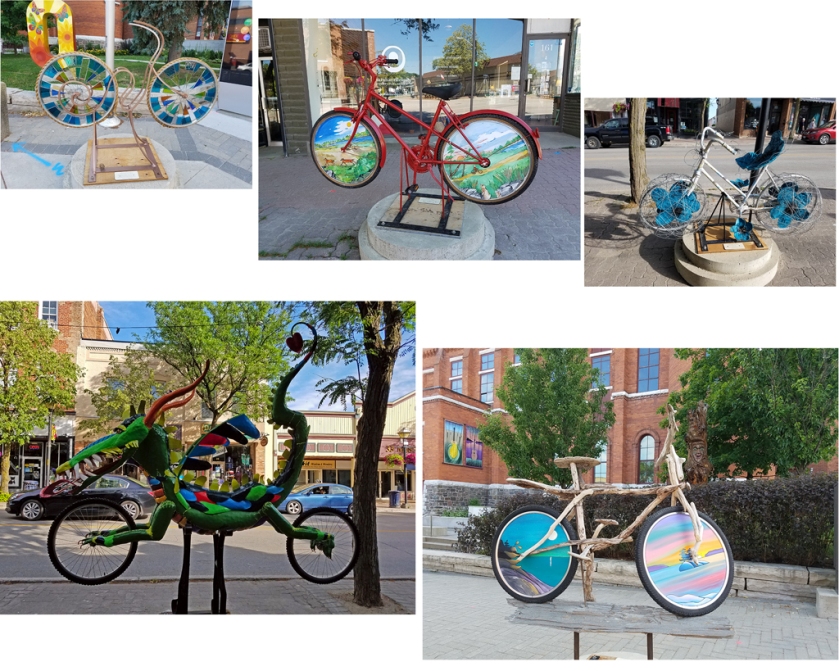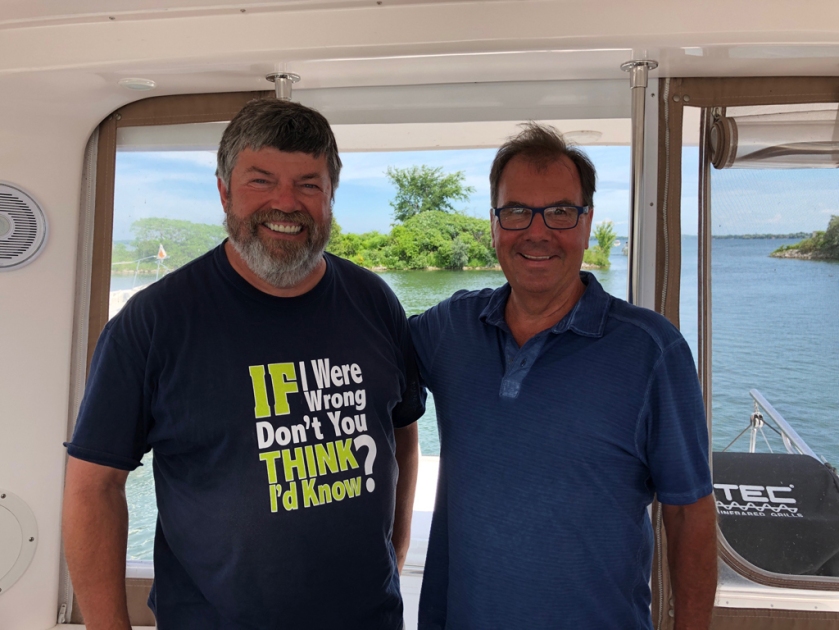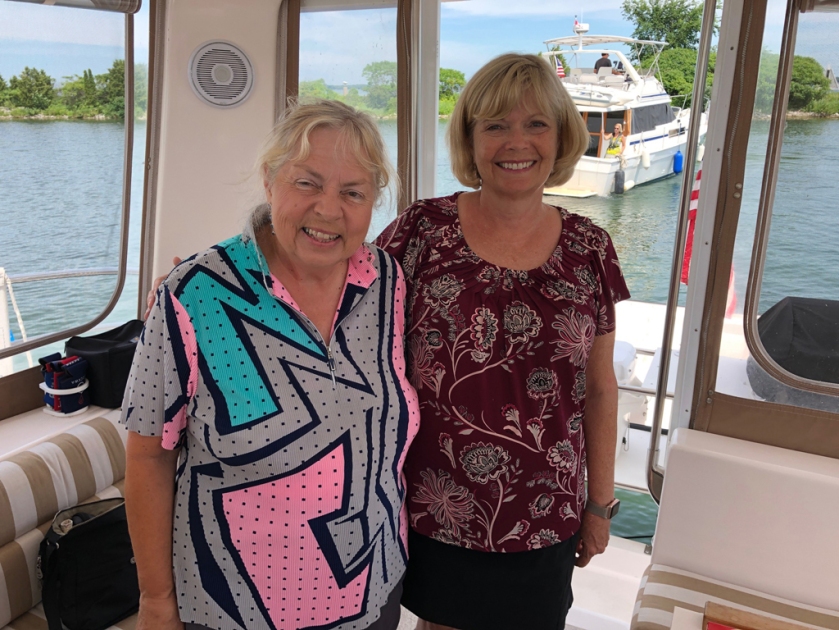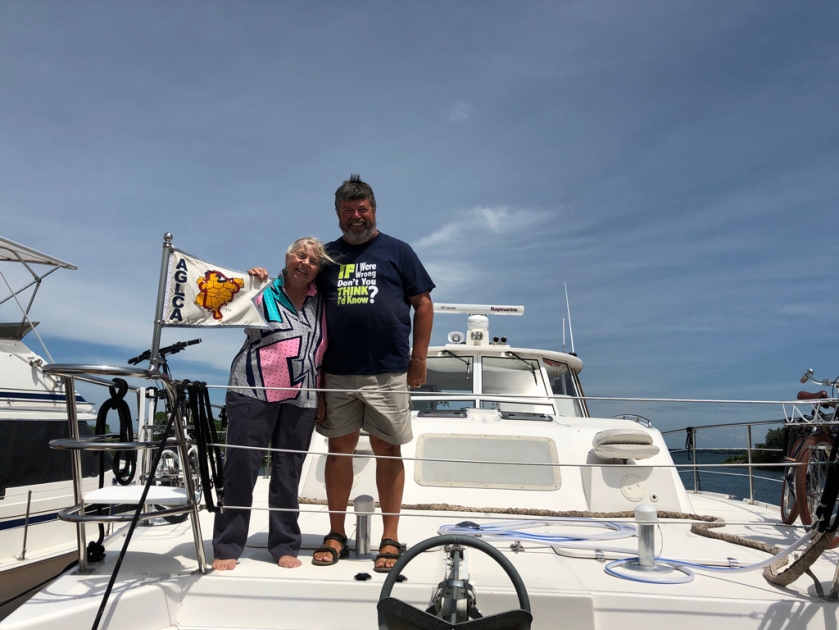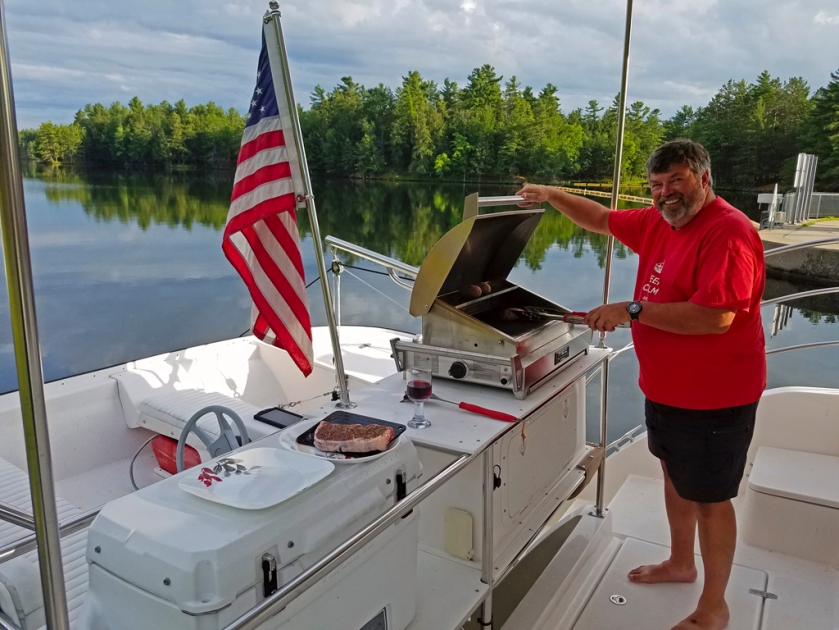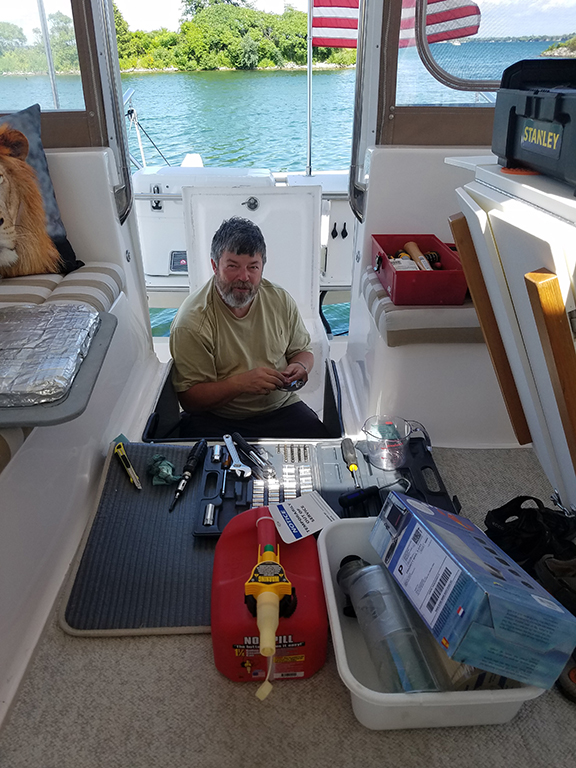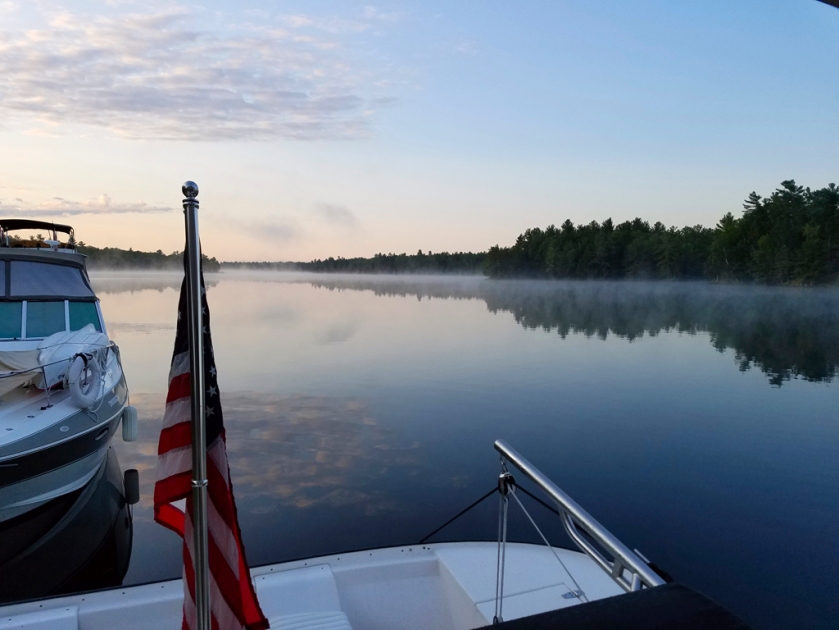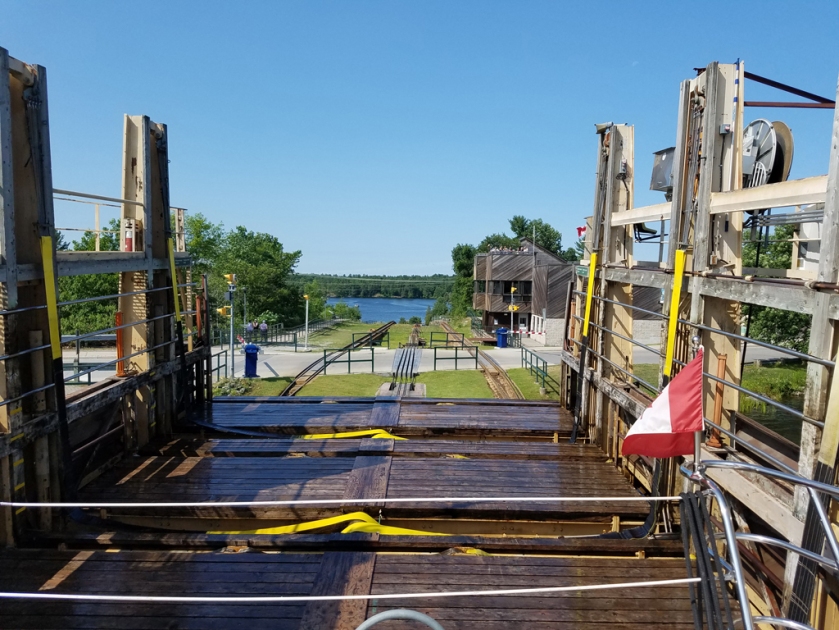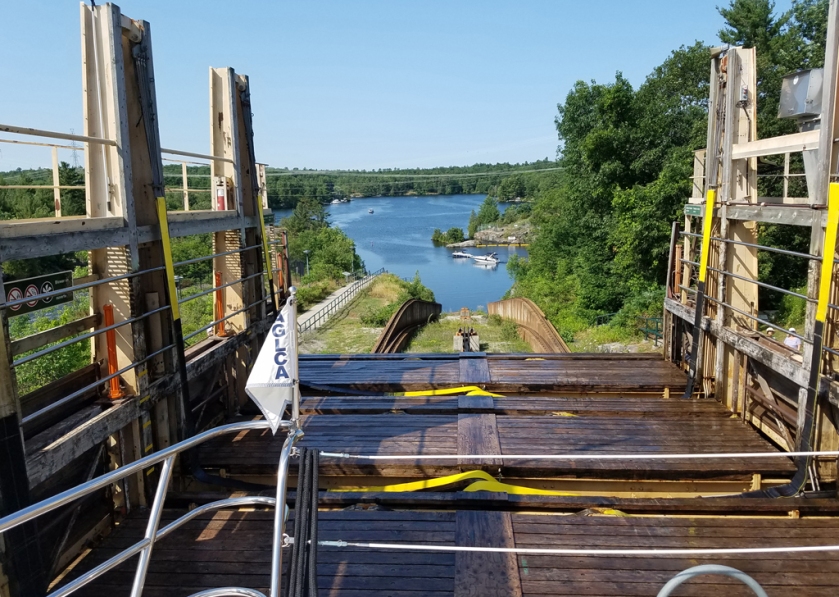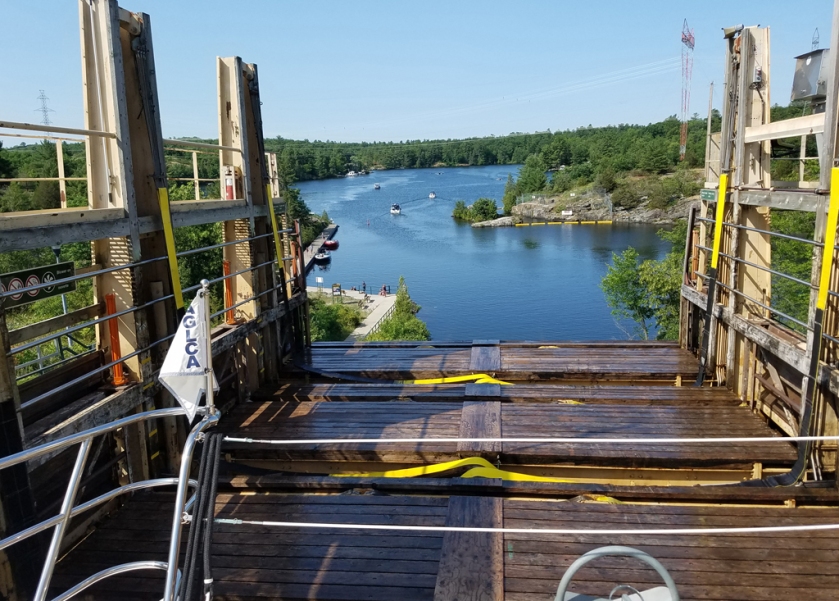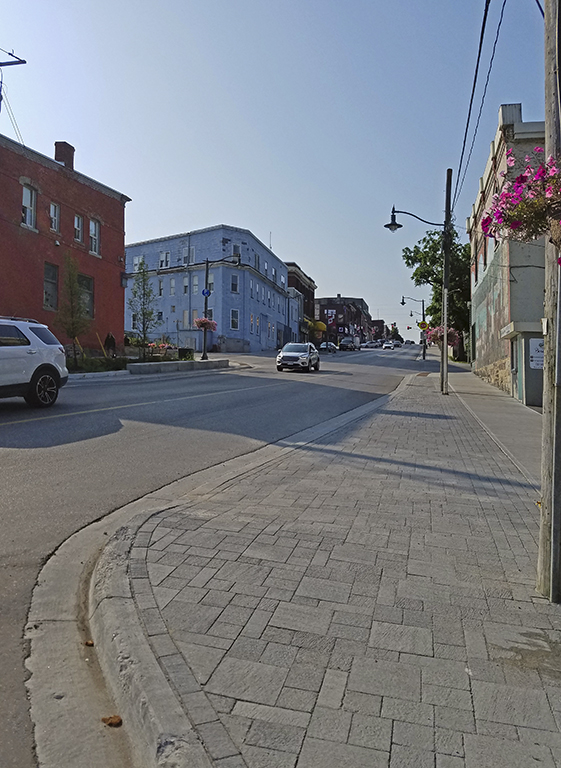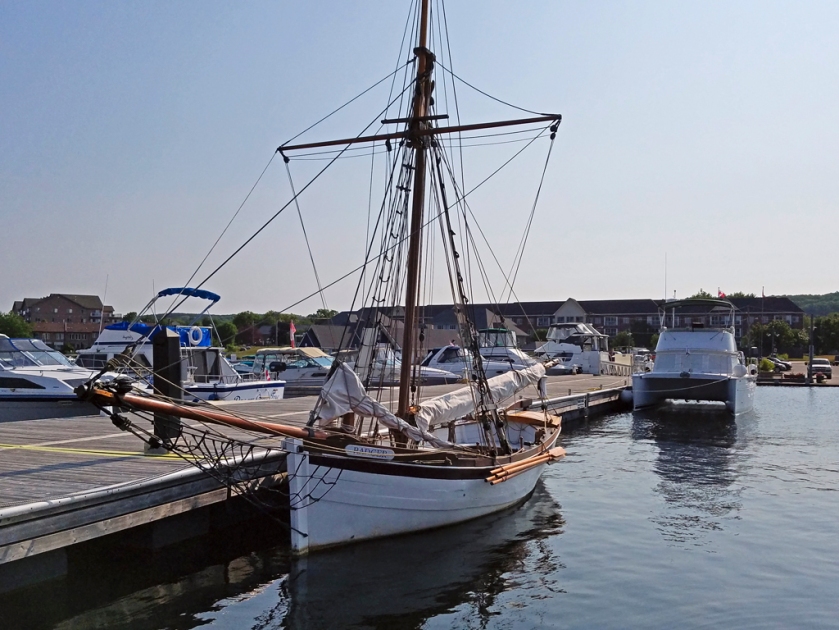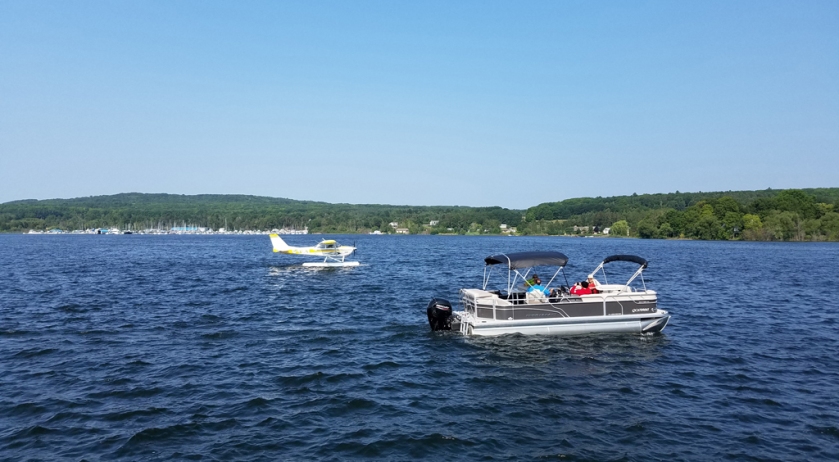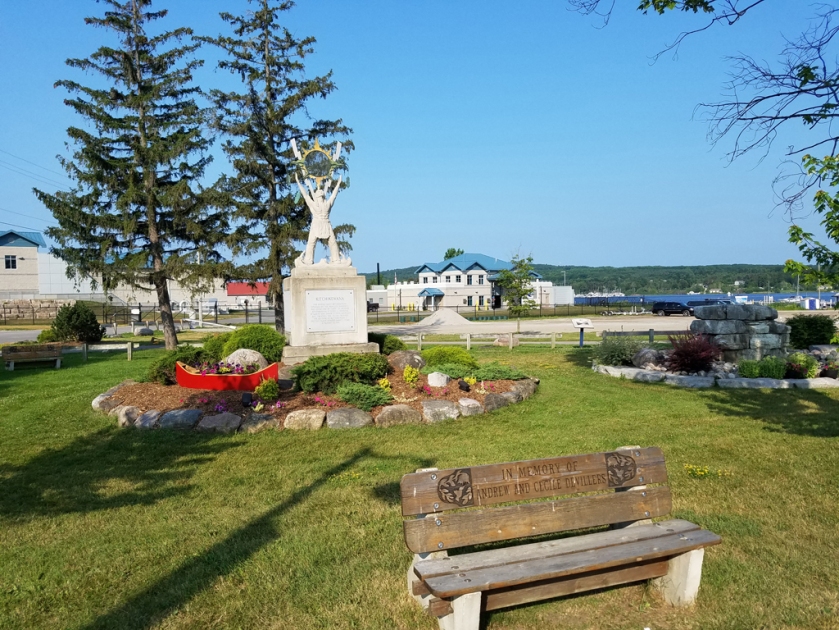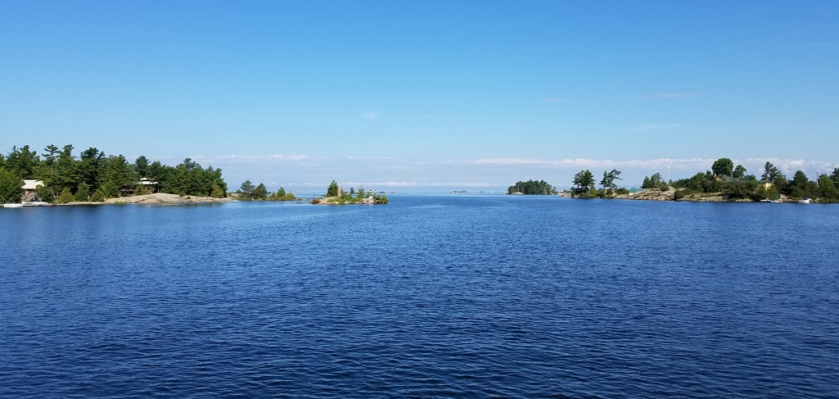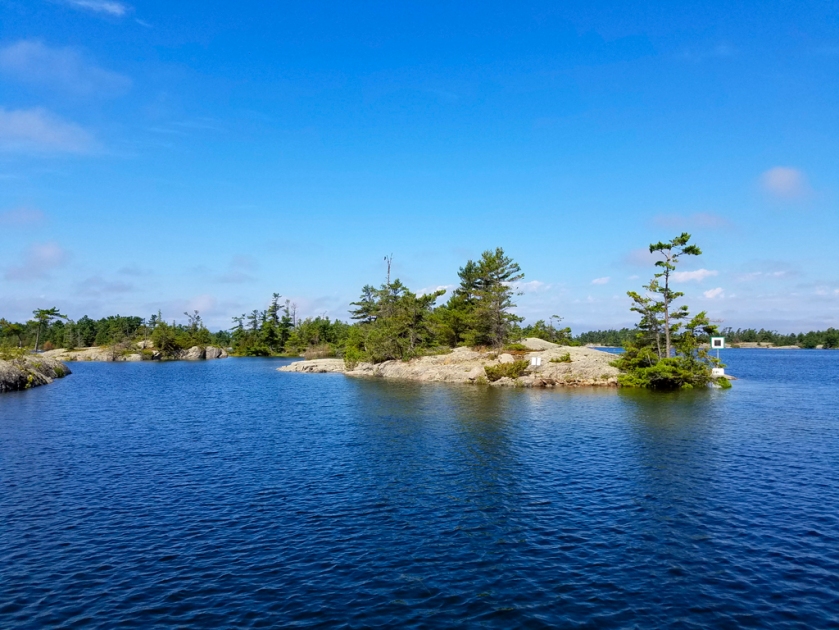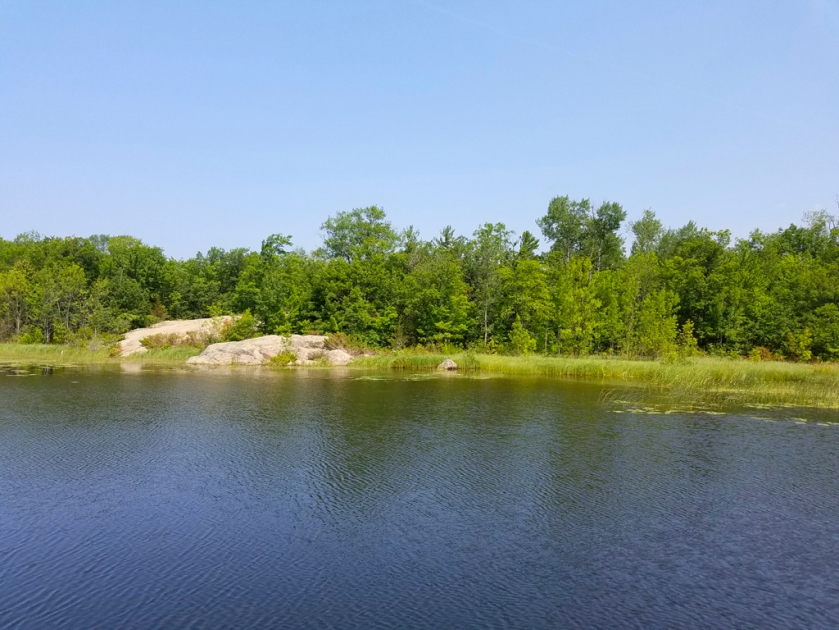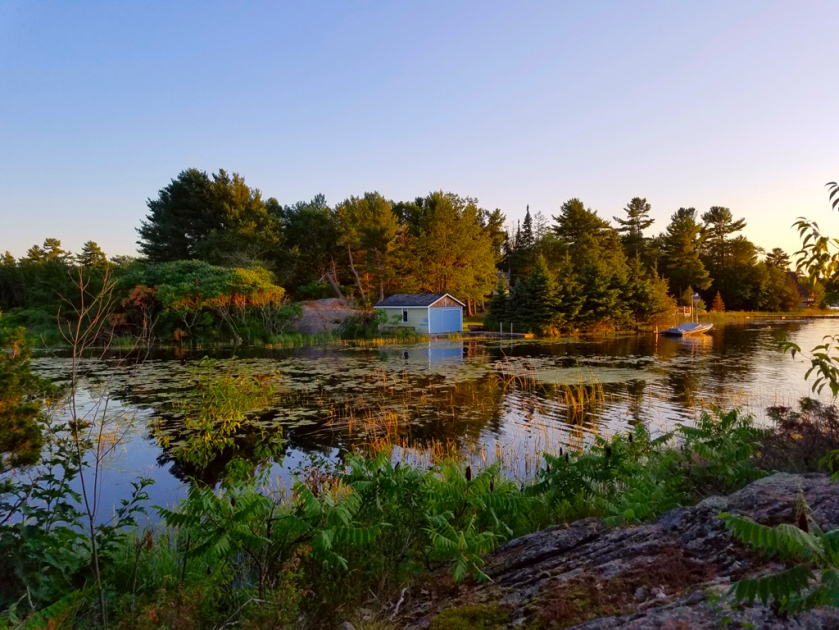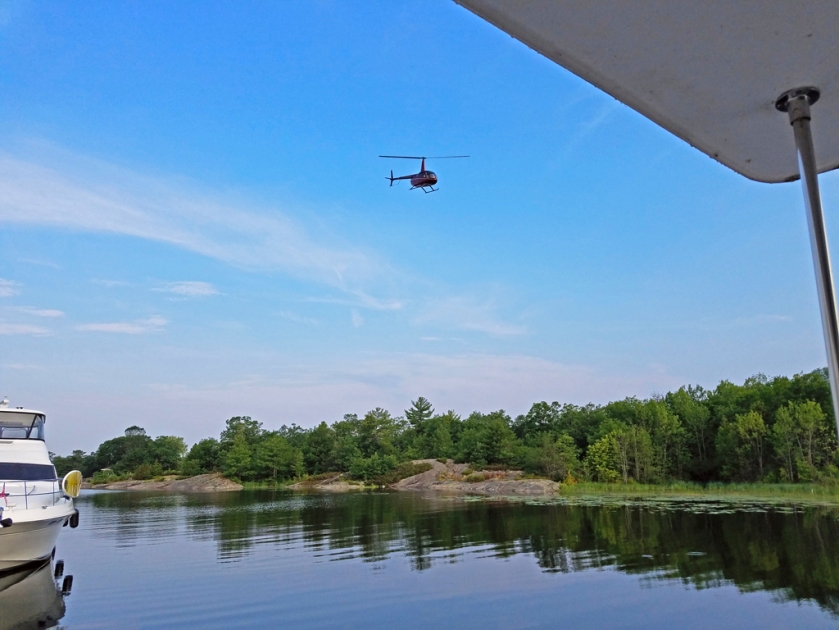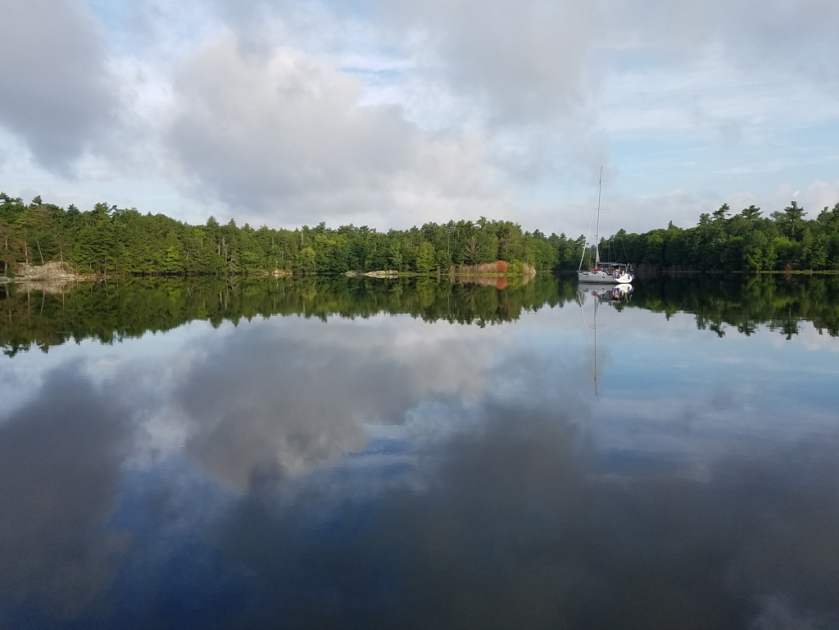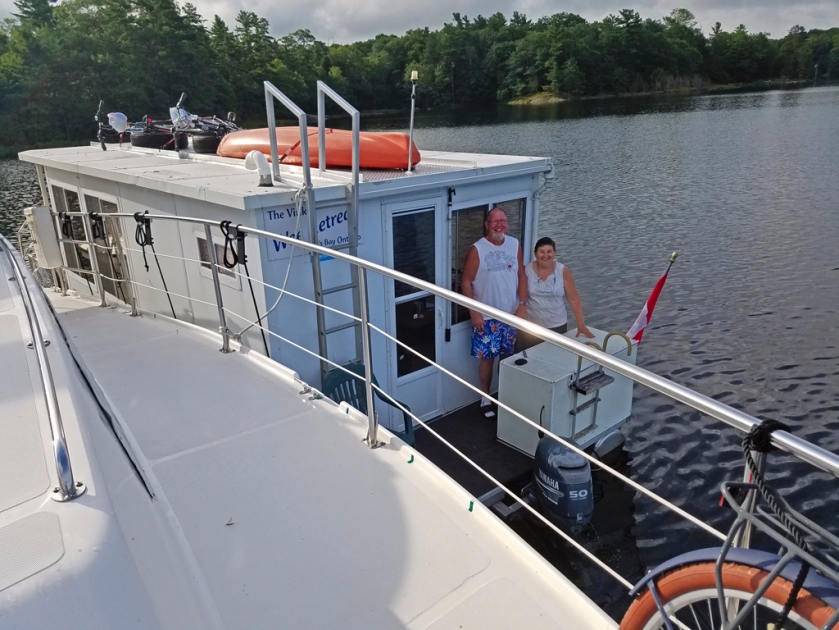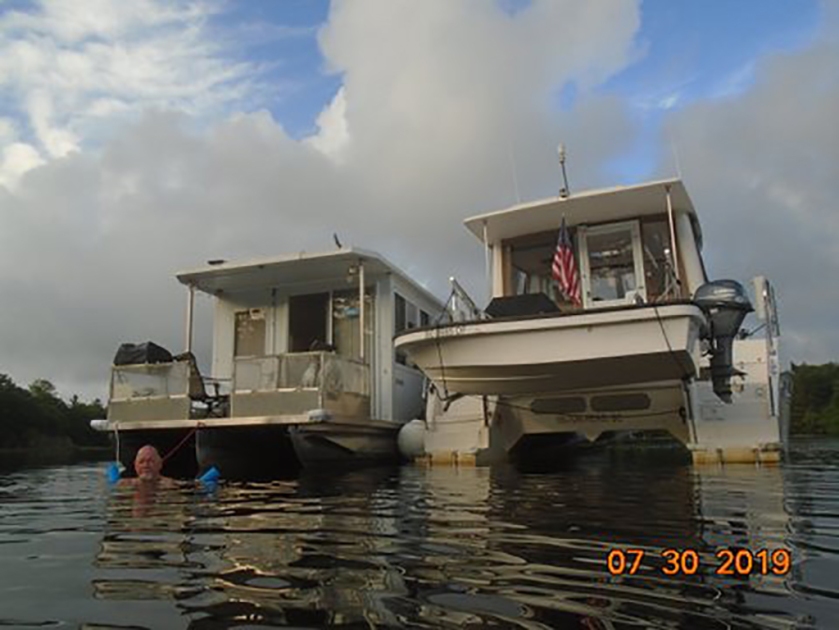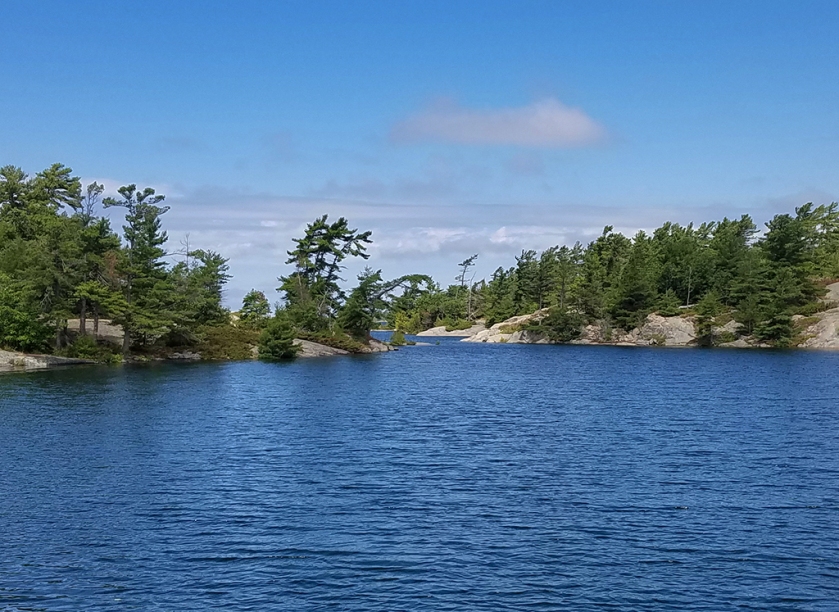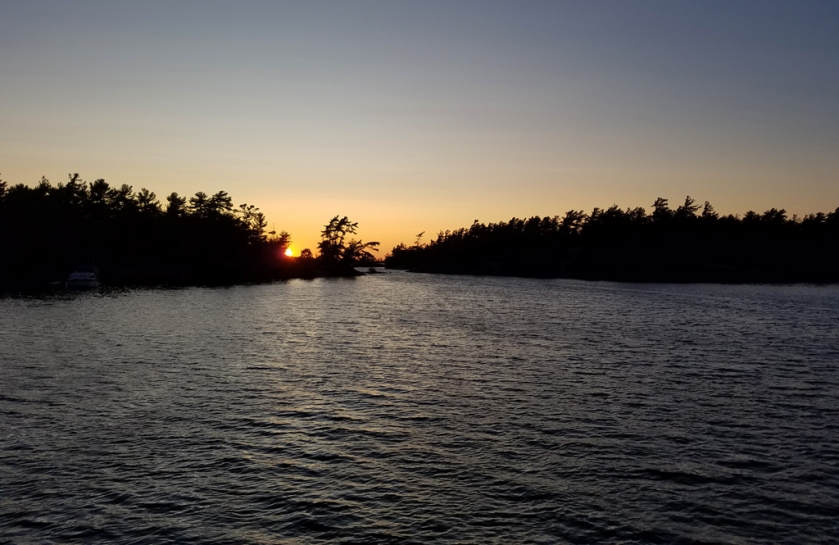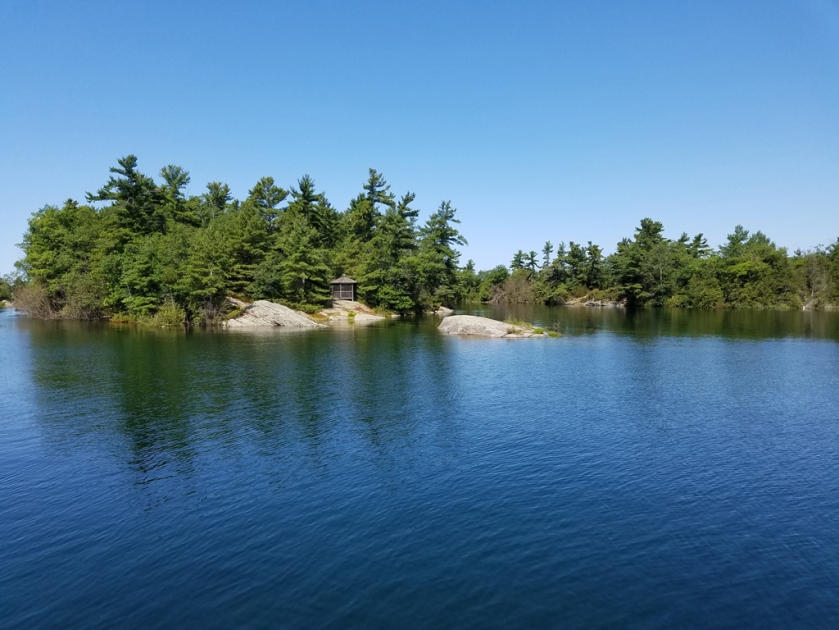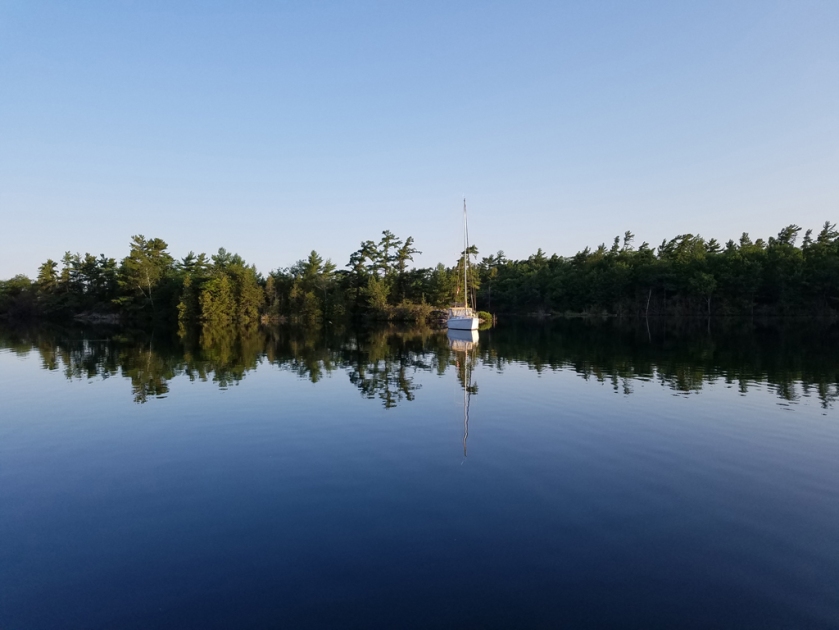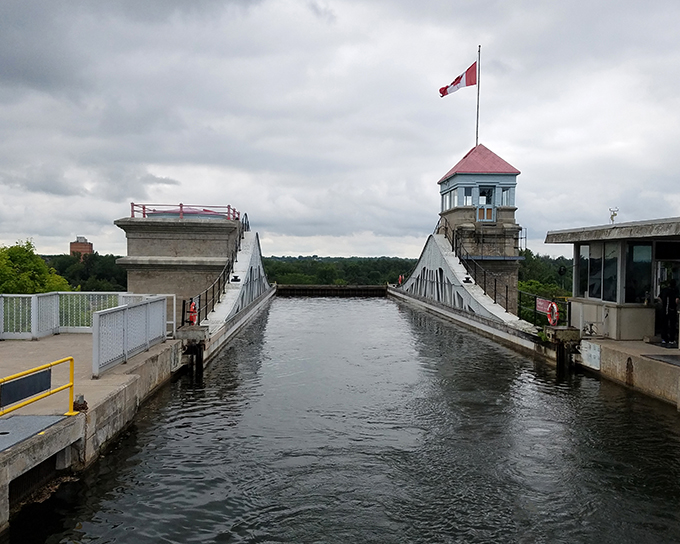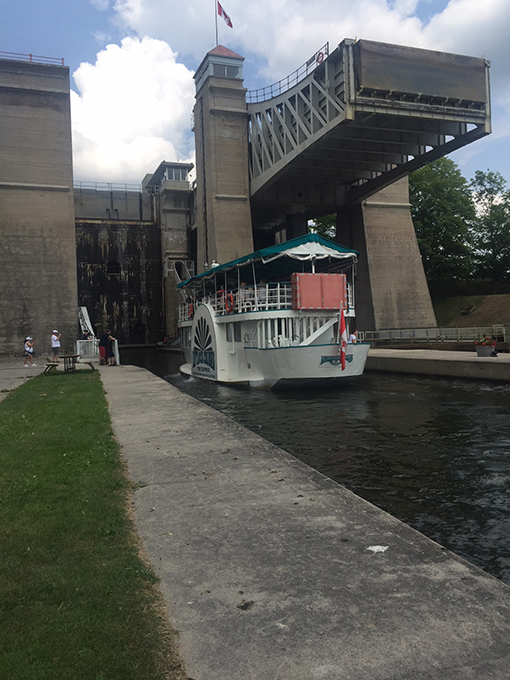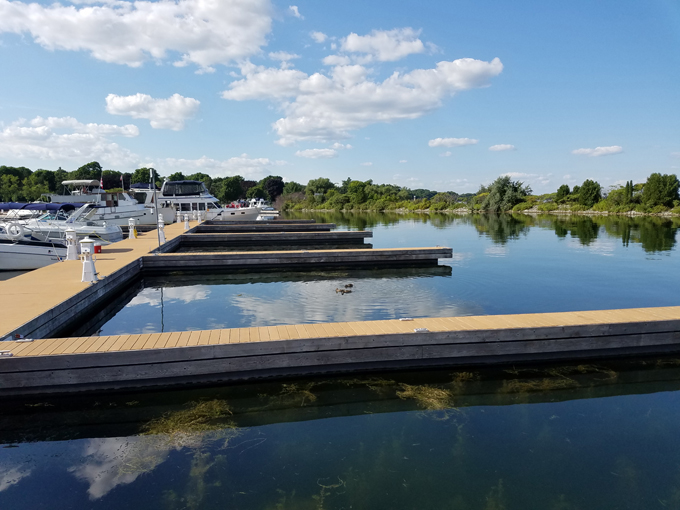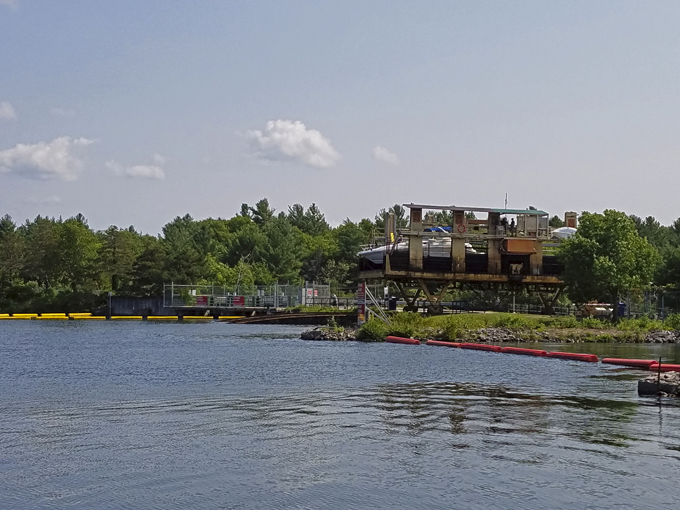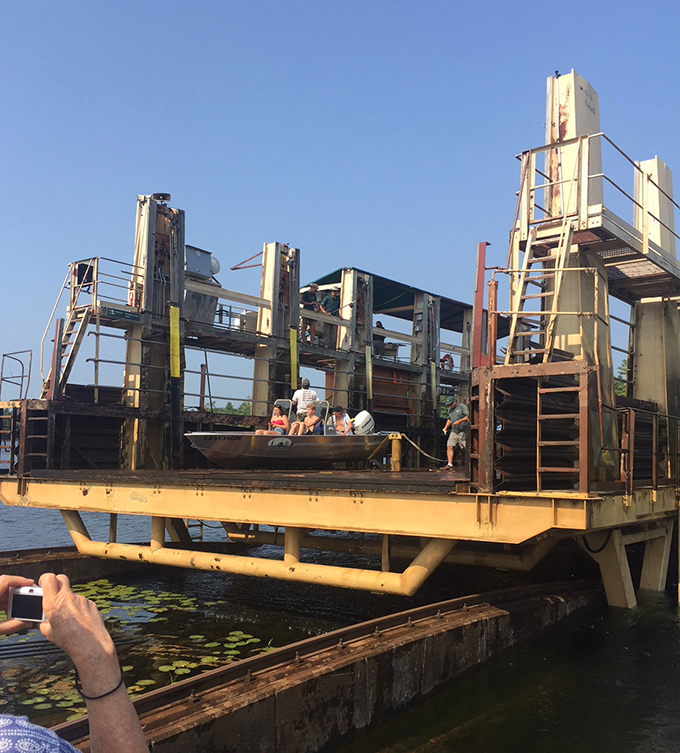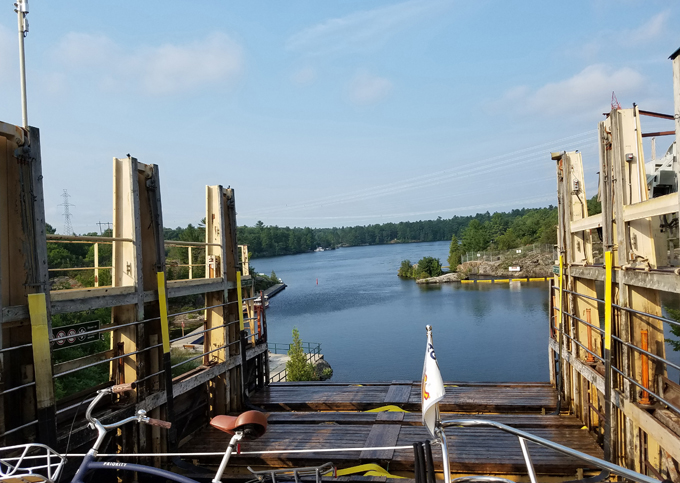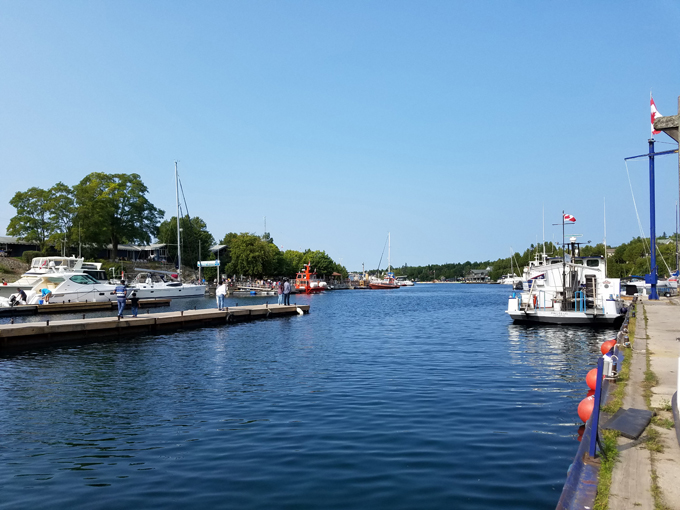We left Gore Bay on a calm morning. The water was as smooth as glass, and, unusually, continued so all the way to Meldrum Bay. We had read about the restaurant at Meldrum Bay Inn, and decided that, with so many Loopers raving about it, we had to try it. Fortunately, we made a reservation. It is a difficult dilemma for Loopers. On the one hand, making, and trying to follow, a schedule, is something of a no-no. It will tend to lead to poor decisions with respect to weather conditions and sea state. On the other hand, marinas fill up during high season, as do the nicer restaurants. Dick and I try to take a middle road. We have a plan, with rough dates, but the plan is adjusted as we travel, to allow for weather delays and to add some flexibility to destinations. For holiday weekends, or if there is to be a festival in town, we make marina reservations several weeks in advance, since they can always be cancelled. Most other marina bookings are made less than a week ahead, and we also make restaurant reservations as soon as we know there is a reasonable chance that we will get there on the day we expect.
This has stood us well this summer, both for the marinas and also for the restaurants. We felt bad for several boaters who arrived in Meldrum Bay expecting a great dining experience, only to be told that the restaurant was fully booked. There are no other eating out options, and not much reason to stop there without the restaurant. Later we were surprised to discover that in fact those boaters could have been accommodated, had we known. The owner takes bookings for tables, most of which seat 4 to 6 people, and once her tables are booked, she refuses reservations. I overheard her saying “I let the boaters sort it out among themselves”, in other words, we could easily have asked the people on one of the other boats to join us, had we known, as almost all of the tables had only two people seated. A strange way to do business. As it happened, the meal was reasonable but not the exceptional experience we had been led to expect. A night in one of the anchorages we had chosen to miss would have been more enjoyable.
Yes, because we had a schedule, we skipped some of the highly recommended experiences of Georgian Bay’s North Channel. Dick’s mother’s 90th birthday party was coming up, so we needed to be in Sault Ste Marie by a specific date in order to pick up a rental car and return to Trenton for the festivities.




From Meldrum Bay we were expecting an easy crossing of the North Channel to Blind River. Sadly, both the wind direction and the wave heights were quite different from what was forecast. We had a very uncomfortable ride, with the waves broadside, causing a corkscrew motion that was most unpleasant. We ran fast, and were in by 10:30am, after which I needed to just sit still for a couple of hours in order to feel more like myself! Blind River has little to offer boaters, as the marina is about a mile from the town, but we were delighted to get a message to say that our friends Brenda and Bruce on B-Side were on their way. Their upcoming plans required a weather window that was likely to close if they didn’t make some adjustments, giving us an unexpected reunion.
Like much of Georgian Bay’s North Channel, the area was first settled by fur traders, loggers, and miners. A sawmill was built at the mouth of the river originally known as the Penewobecong. Europeans named it the Blind River, because the mouth of the river was hard to see along the canoe route of the voyageurs. The protected estuary with deep water offshore was a good location for a mill at a time when all trade was carried by water. The copper mine at nearby Bruce Mines was a good customer for the logging industry and sawmill, providing timber and planks for the mine. For 40 years from 1929, the McFadden Lumber Company operated the largest white pine sawmill east of the Rockies. The mill finally closed in 1969, but a few years earlier, uranium was discovered in the area. While a local mine was short-lived, a refinery was built nearby in 1983 and still operates, producing uranium trioxide and providing employment for the area. The Trans-Canada Highway runs through the centre of the town.

That evening we all decided to ride bicycles into town to the best rated restaurant. We got our bikes off the boat, and after walking them along the dock we were ready to ride them along the boardwalk towards the road. As my companions headed out, I prepared to get on my bike when it decided to lean affectionally towards me, rather like a large and friendly dog. There was a moment where I realized what was in my immediate future, and then I subsided gracefully to the boardwalk, with the bike landing on top. At this point I was very glad I had decided to carry my bike helmet on my head! I was also glad the landing surface was wood instead of gravel. The only damage was to my dignity. And I did subside gracefully, that’s my story and I’m sticking to it!
We rode to the restaurant and enjoyed such a convivial last evening together that we rather lost track of the time and ended up riding back in the dark. Fortunately, we were able to take back roads with little traffic, since the bike lights I had purchased had been deemed unnecessary by the man who would have had to take the time to clip them onto the bikes.

Our planned very early start the next morning was somewhat delayed by fog. After about an hour it cleared, so we set off, only to have it close in again. For only the second time this season we needed to run with the radar on a split screen with the chart, luckily no other boats were around. It is a strange and eerie feeling to be out on the water with nothing to be seen around you except your wake! The fog lifted fairly quickly and we were in Thessalon by 11:15. In the afternoon the wind and waves really kicked up and we were glad to be off the North Channel. There was one other Looper boat in, Idyll Time, and we enjoyed docktails later that evening aboard Nine Lives.



Our passage to Richard’s Landing on August 20th was very pleasant, although the wind picked up later and again, we were glad of our early start. Richard’s Landing is a tiny but well-kept town with a very popular Italian restaurant on the dock. It was completely filled outside on the deck and a fair few tables occupied inside even though it was a Monday night. We enjoyed a wander around the town and spent some time in a very nice shop that featured all kinds of local arts and crafts. After buying a beautiful new wooden chopping board and a pair of moccasins for Dick, both destined for our home in UK, we felt the need to refresh ourselves with ice cream! The next morning, we departed for Sault Ste Marie and a two-week break.






Mum’s birthday gathering went very well, with all members of the family present including Dick’s sister Judy’s family. They made the long trek from northern Alberta, camping on the way. It was wonderful for Mum to be surrounded by all of her children, grandchildren, and great grandchildren for this momentous birthday!
Dick and I enjoyed the trip very much, returning by road to some of the special locations we had visited earlier by boat. We stocked up on chocolates in Lakefield, and finally managed to try Cassis Bistro there. We also returned to Picton to collect our beautiful sculpture and enjoyed a very nice afternoon chatting with Paul Verrall and his wife Donna in their garden. We picked up our vehicle from Dick’s brother, and returned in convoy by a different route, that took us through the heart of Ontario’s cottage country. I may say that I enjoyed the Kawarthas, Muskoka, and Haliburton much more from the water than I did driving. We stopped for a night at the Log Cabin Inn at Parry Sound, having had such a nice meal a few weeks earlier. Sadly, I think we had the b-team in the kitchen on our second visit. The meal was acceptable but nothing to write home about.
Nine Lives was waiting for us in Sault Ste Marie, having snoozed for a week. Other boaters had kept an eye on her, and even adjusted her lines on a rough day without asking, just another example of how helpful and considerate the boating community can be.

The twin cities of Sault Ste Marie sit across from each other on the St Mary’s River. The Ojibwe used the location at the bottom of the rapids as a meeting place during whitefish season. The treaty that ended the War of 1812 set the border between United States and what was to become Canada along the river, dividing what had been one city into two. The rapids drop the level of the water from Lake Superior to the lower lakes of Michigan and Huron by 20 feet, so a canal and lock was built in 1798 to solve the problem of having to portage around the rapids. This first canal was destroyed during the War of 1812, and after the treaty, trade passed through Soo Locks, on the American side of the river. In 1895 a Canadian canal was built after an unfortunate diplomatic incident between the two countries. At the time it opened, the Canadian Sault Ste Marie Canal contained the largest lock in the world, and the first to be electrically operated. This lock was shut down in 1987, and a new, much smaller lock was built within the old lock, completed in 1998. Today the Canadian lock carries recreational and tour boat traffic, while the much larger commercial ships use the Soo Locks. The Soo Locks are the world’s busiest canal in terms of tonnage, in spite of being closed each year from January through March. We watched a number of freighters and tankers pass into the locks from our vantage point in the marina.
Dick spent a summer working at what was then Algoma Steel in Sault Ste Marie when he was a student. At the time it was a huge and important steel mill, today it is owned by an Indian company, and is a much smaller operation.

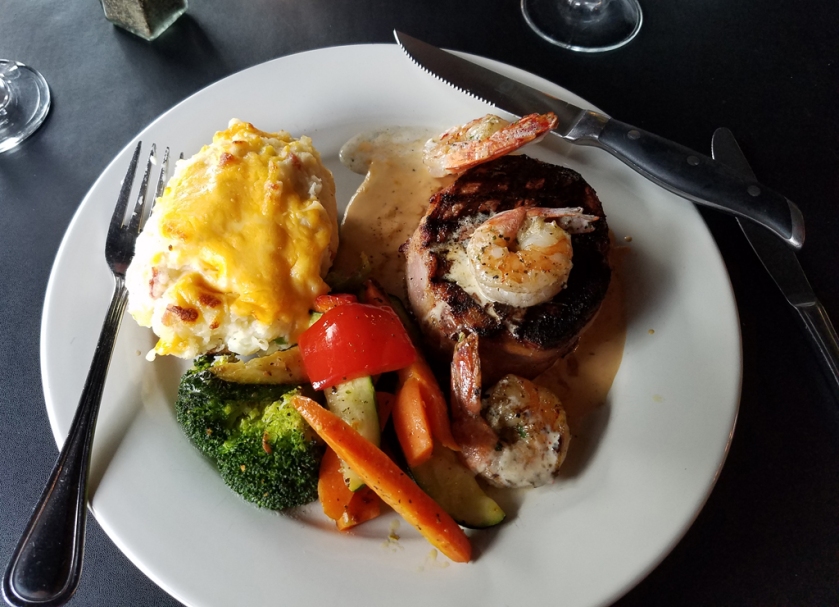
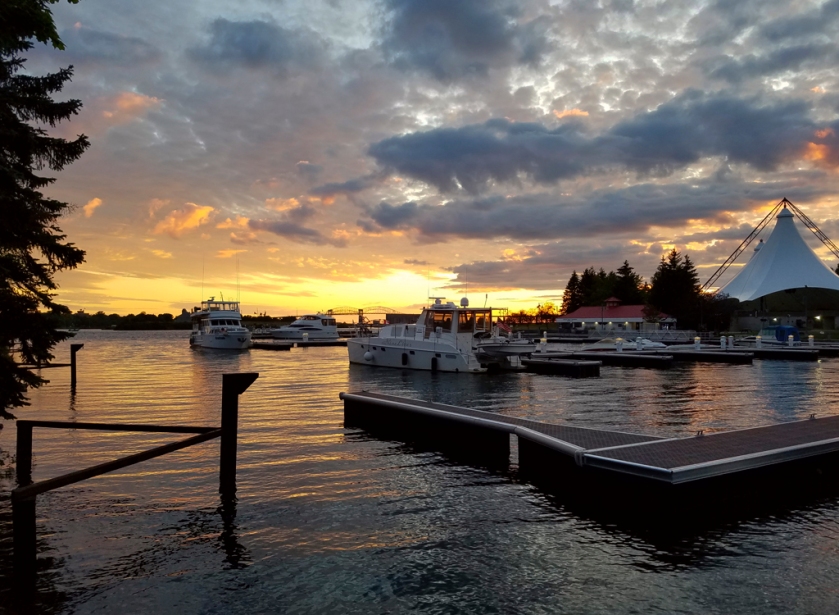
The commentary on the Agawa Canyon train told some of the story of the visionary businessman Francis Clergue, who arrived in Sault Ste Marie, backed by a consortium of Philadelphia businessmen, in the early 20th century. A hydro-electric dam, a paper mill, the steel plant, part of the Algoma Central Railway, and two mines were all part of the interconnected empire he created. Sadly, like many fast-growing businesses before and since, cash flow was insufficient to fund the growth, and while most of his enterprises continued, some to this day, Clergue was unable to maintain the empire and in 1903 he was forced out. He left Sault Ste Marie and never lived there again. The paper mill closed in 2011, and has now been repurposed into a mixed-use cultural and tourism hub. The Algoma Conservatory of Music occupies one of the restored buildings, while another contains several restaurants and an events venue. A farmer’s market is also on the site, and a new station for the Agawa Canyon Railway Tour is planned. We ate in the steak house and also the pizza restaurant, and enjoyed both the food and the ambiance. It is so nice to see beautiful historic industrial buildings being preserved instead of knocked down.


On August 30th we set off very early for the famous train journey to Agawa Canyon. The Canyon was not formed by glaciation as one would usually expect in this part of the world. Instead it is part of an ancient rift valley, created through faulting 1.2 billion years ago. This trip is 8 hours of travel for a 90-minute stop. It was nice enough, but not worth it. I believe that 15 or 20 years ago it was a very different experience. We could see that the brush and small trees have been allowed to grow up all alongside the tracks, so that the scenery is almost entirely a green tunnel punctuated with very quick glimpses of the views that would be marvellous if you could actually see them. The trip is likely nicer once the fall colours develop, but even that will not change the complete lack of the views of the rivers, lakes, and Lake Superior that we had looked forward to.









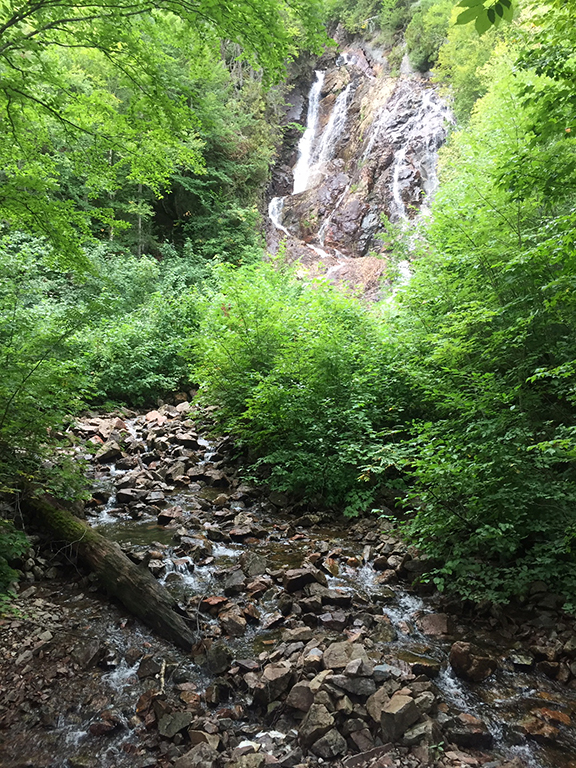

A few days later we went for a drive along the route taken by the train. We had hoped to see the railway trestles from the land, as well as the dam and possibly some of the fall colours, but we were frustrated in those goals. However, it was an enjoyable drive and we did get to see some of Lake Superior and the very pretty Chippewa Falls. The Falls demonstrate some of the fascinating layers of geology that we were told about on the train. We could see ancient rocks smoothed by glaciers, and darker areas that were laid down by lava flows.



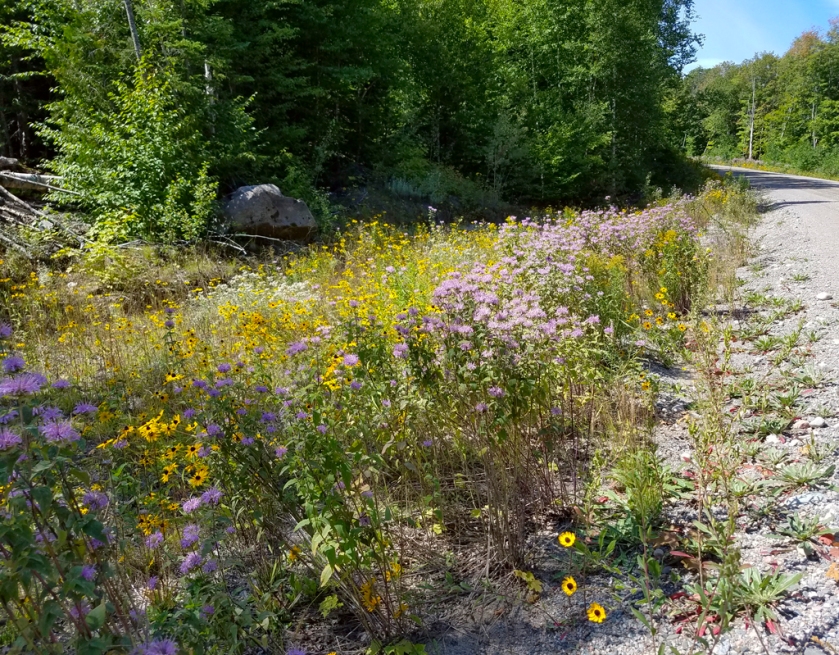
SS Edmund Fitzgerald was an America Great Lakes freighter that sank in a storm in November 1975 with the loss of all aboard. When launched in 1958, she was the largest ship on the Great Lakes, and is still the largest ever sunk there. Although the story was later immortalized in Gordon Lightfoot’s song, “The Wreck of the Edmund Fitzgerald” the following year, I can definitely remember listening to the radio as the tragedy and the search for the missing freighter unfolded. The sinking led to improvements in Great Lakes shipping regulations and various safety practices. As we looked out into Alona Bay at the deep blue waters and endless horizon of Lake Superior it was not hard to imagine very different conditions in November. We have experienced changing forecasts, and conditions that are not as expected, often enough on our own voyages to be able to understand how it is possible to run into problems. Whether it is the ocean, lakes, or even rivers, it is important to respect the dangers and remember that boating is nothing like driving on roads.


The Trans-Canada Highway began construction in 1950, intended to provide an unbroken transcontinental route across Canada. In several places along the route there is more than one designated route, and the numbering is not consistent from province to province. However, the entire length and all the variations carry a white on green maple leaf route marker. The highway officially opened in 1962, and was completed in 1971. At Chippewa Falls we read about “The Gap”, a 56-mile portion of the highway that was considered one of the most difficult parts to construct due to topography and the hardness of the granite. Construction was stopped until 4 men from Wawa walked the route through the bush to Sault Ste Marie and met with officials to demonstrate the desperate need for the highway for the residents of Wawa. This area is considered the half way point of the transcontinental highway. Dick and I found the story interesting, having driven nearly all of the highway, including most of the variations, over the years. One day we will have to complete the piece in Newfoundland and the last part of Quebec that we have not visited.
We enjoyed great docktails aboard Nine Lives one evening with other boaters, not Loopers this time. One couple are Sault Ste Marie locals. He is a commercial diver and instructor, and owns a restored tug as well as a large trawler. They seem to divide their time between his work and a farm, and live partly aboard the boat as well. The other couple are from Ohio, he is a firefighter.
September 3rd was very rainy and windy. Dick visited both the Bush Plane Museum and the historic lock while I made a set of prints of the birthday gathering for Mum. We were also watching the progress of Hurricane Dorian as it threatened the east coast and Hilton Head. After a few days of increasing concern, I am glad to be able to say that our area was essentially unaffected, apart from the inconvenience of the mandatory evacuation.


Eventually it was time to leave Sault Ste Marie and continue the last week of our summer voyaging. Our first stop was the very picturesque town of Bruce Mines. The mines here were known to the First Nations, and early explorers arrived in search of the copper. The first copper mine was opened in 1846, and was worked by miners who emigrated from Cornwall. The mine managers would not allow any stores to open in the town, instead settlers were forced to buy everything from the company store. The enterprising Marks brothers from Hilton Beach would load fresh produce and various goods onto a barge that they would anchor off the town because they were not allowed to dock. The townsfolk would row and paddle out to the barge to shop. The copper was worked for about 100 years before it played out. Today the mine is a quarry for an exceptionally hard rock that is used for road building. The town is a few miles west of the quarry, and I was surprised at how pretty it is. It is also right on the Trans Canada Highway, and boasts several restaurants of previously excellent reputation. Dick was particularly looking forward to the Bavarian Restaurant. Sadly, the restaurant has been sold. The current reviews of both that and the other local eatery were so bad that we decided to eat on board.


Our last night out was at an anchorage in Milford Haven, a long narrow inlet, still in Canadian waters. We anchored near a picturesque abandoned boathouse. We were surprised to be completely alone in such a pretty spot, usually we would have expected a few sailboats and possibly some Loopers to join us. It just shows how much the weather has changed since the middle of August. We are seeing far fewer days of fine weather, and the nights are now considerably colder. I imagine most boaters that are still out prefer to stop in marinas with power, rather than anchoring out.

We arrived in Drummond Island Yacht Haven just before noon, followed by several other Loopers. We were invited for docktails on board Vitamin Sea, together with the crew of Misty. It turns out that we had met both couples before, last year at Rendezvous in Norfolk and then Misty again on the Hudson. They are all great storytellers with an excellent sense of humour. Afterwards we went to a local Tex-Mex restaurant for an outstanding meal. It is fortunate we have our vehicle here, because the town is several miles from the marina.

Drummond Island sits between the Georgian Bay’s North Channel and the open waters of Lake Huron. It is the seventh largest lake island in the world. The Canada United States border runs north and east of the island, so it was our port of entry for our return to USA. It used to be necessary to meet in person with a US Customs and Immigration officer, but these days technology has improved things, at least for boaters. Dick has an app on his phone that he uses to notify Border Protection of our entry. An officer may ask to have a short video conversation, and will then approve our entry. A few minutes later a number is emailed, that we enter into our online profile details and that’s that! We did learn last year from other Loopers that answering all questions accurately is important. For instance, when asked if you have any fruit and vegetables on board, the correct answer is yes. If you lie and say no, they will know you are lying, because boaters of course have food on board! When asked, you simply tell them you have “ship’s stores”. As commented by a fellow boater the other day, Loopers, who tend to be retirement age, and travel at 7 knots on trawlers do not exactly fit the profile of drug dealers and smugglers.

Drummond Island is connected to the mainland by a ferry that runs all year round. There are around 1000 permanent residents. There is a small air strip, and a primary school, but most children are bused to school on the mainland via the ferry. The island is a year-round tourist destination for those who enjoy outdoor pursuits, boasting miles of trails for off-roading, more than 13 unique ecosystems, water trail systems for paddling, access to both Lake Huron and Lake Michigan for boaters, and excellent birdwatching. Dick and I caught sight of sand hill cranes as we drove to dinner one evening. The underlying rock is dolomite, used in several industries including glass, paper making, agriculture, and even medicine, but the main use is for steel manufacture. The Drummond Island Quarry, now owned by Carmeuse, ships out nearly a million and a half tons of dolomite each year. The quarry is located inland, and we could just see a road specifically created to support 75-ton capacity haul trucks that bring the quarried rock to the processing plant on the shore.

The Yacht Haven where Nine Lives will stay for the winter, has a number of huge buildings, one of which is heated. This means that we can leave much of the food (pantry items), clothing, bedding, etc on board. We also do not have to put chemicals into the fresh water and blackwater tanks as we would if we had to winterize the boat. There is quite a bit of work done even so. We take home flour, since it does not last well, also anything that needs refrigeration of course. I like to take large laundry items like bath mats and some of the bedding home, so it can be washed (and ironed) in my big machines at home. Dick took samples of the oil from the engines, which are sent away for analysis. The report will tell him whether there are any problems with the engines, and also whether he needs to change the oil when we return in June for next year’s voyaging. We like to take the carpets home for steam cleaning. A final cleaning of bathrooms, the salon, and galley gets the boat ready for a winter rest, although of course another cleaning will be needed when we return. Dick gets together the various spares and parts that he will ask the boatyard to install, and also spends a lot of time making lists of needed maintenance and replacements. Boating is not an inexpensive lifestyle! This winter we will need a new air conditioning unit to replace the useless forward unit, a replacement side by side fridge freezer, and a new water pump.
On Monday morning the head tech from the boatyard came on board to go over the to-do list with Dick and see where everything was located. At last Nine Lives was ready for haul out. We have not seen her hauled out since the survey when we bought her in 2016, so we made a point of staying to see it. The boat is driven into a narrow channel, and is positioned above two large slings under the travel lift. Slowly, the boat is lifted in the slings, and then the travel lift drives away from the slip and conveys the boat to its destination on land. The heated shed was not quite ready for Nine Lives, because boats are located in the shed in reverse order to when they are expected to leave. Instead she was positioned on blocks of wood so the travel lift could be unhooked and driven away.

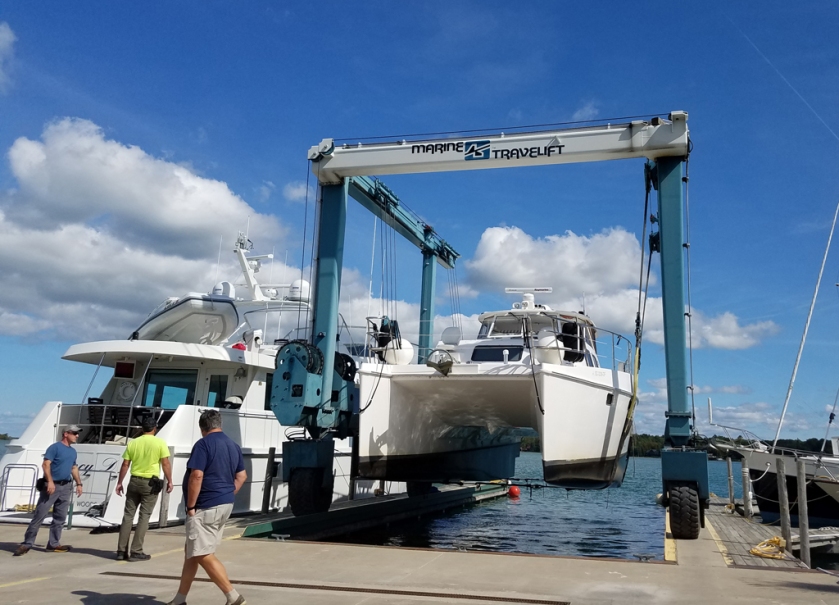


The first thing we wanted to check was the status of the sponsons, the extra flotation that is unique to Nine Lives, and that had the hole in it last year. To our surprise and dismay, we could see that in spite of having taken considerable extra care this year, the starboard side sponson was cracked, and so was the one on the port side. Dick had arranged for plugs to be installed last spring, and as soon as they were opened gallons of water gushed out from both sides! So not only was the extra flotation not doing its job, we were hauling around all that extra weight of water! This impairs fuel efficiency, and also creates an imbalance on the boat. Water puddles in the showers and the kitchen sink, and the ice maker gets iced up as the automatic refill spills out of the back of the tray and onto the bottom of the unit. Dick will be getting in touch with the boat builder to find out exactly where the extra flotation part begins and ends, and of course the Drummond Island boat yard will need to make repairs. We will have to look into some different fenders to try to protect this vulnerable part of the boat in future. Apart from that, Nine Lives is in good condition, props and rudders looking good.


We were able to stay overnight in cabins associated with the Yacht Haven. They were rustic, but well equipped and absolutely spotless. There was a lovely view over the bay and beautiful sunsets. The only inconvenience was a dearth of power points, including in the bedrooms. In fact, one of the bedrooms had a very nice bedside lamp, but the cord was left lying on the bed because there was absolutely no place to plug it in!

The next morning, we finished packing up the car and said goodbye to Drummond Island until next summer. It has been a wonderful voyage this year. The weather could not have been better, not too hot, and very little rain. The rain we did get was mostly at night. We seldom needed the air conditioning, and when we did, the aft unit was sufficient. This was fortunate, since the forward unit is not working and is scheduled for replacement this winter! We had few weather delays, only one major (more than a day), and there were also few days when the forecast for wind and waves was not as expected. We met many Loopers this year, because we were travelling at the same time as most of the “pack”. Lots of enjoyable docktails and dockside chats.
This will be the final blog update for 2019. Look for Nine Lives again some time in June, 2020.



